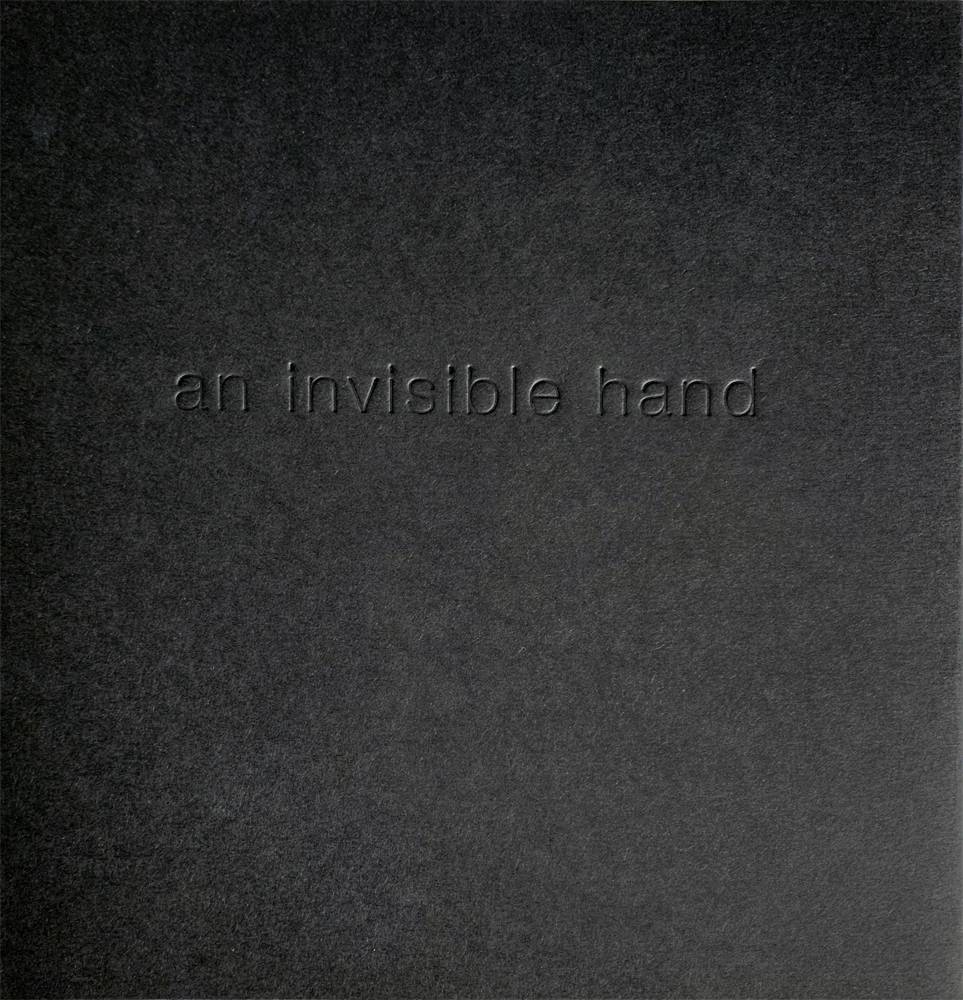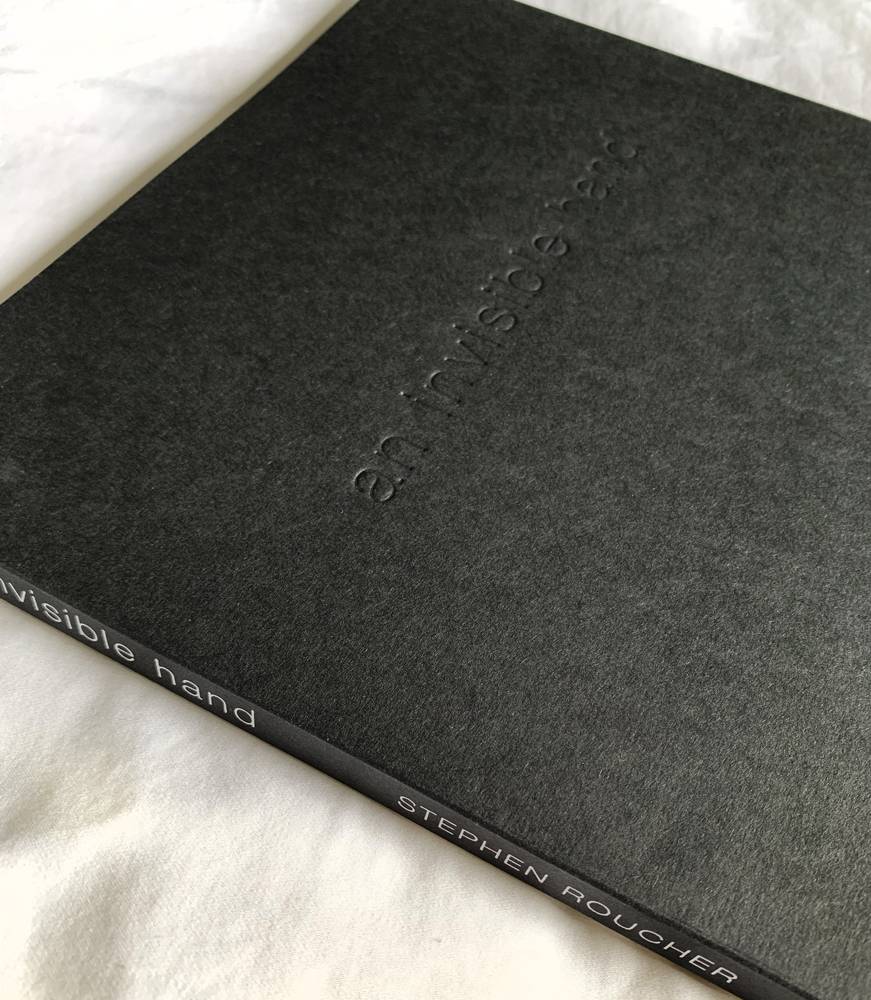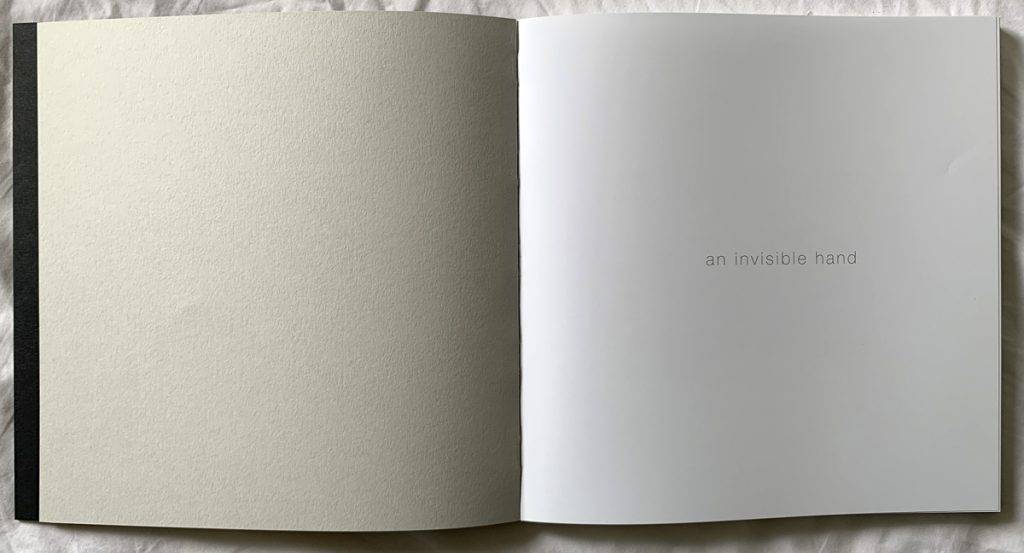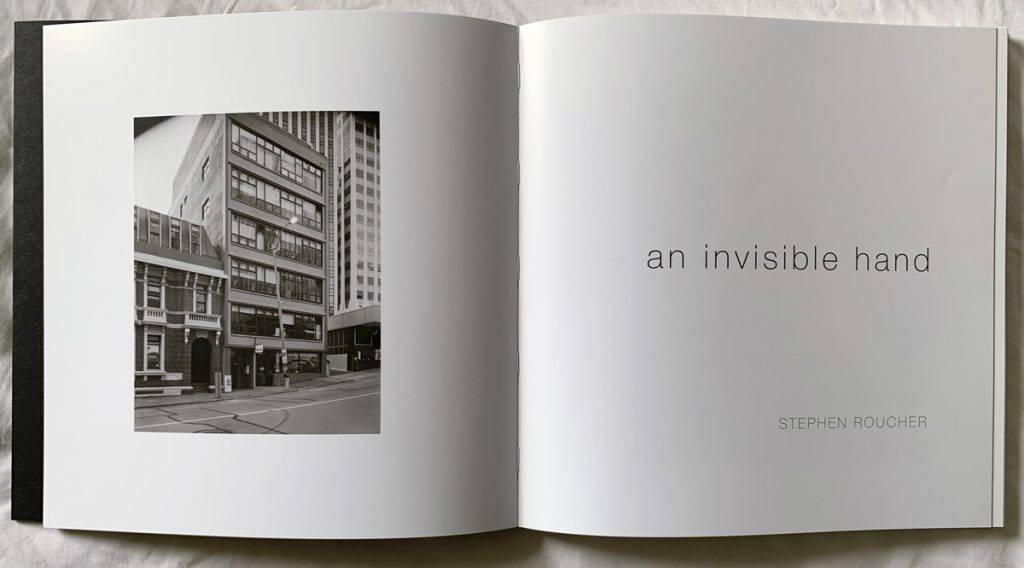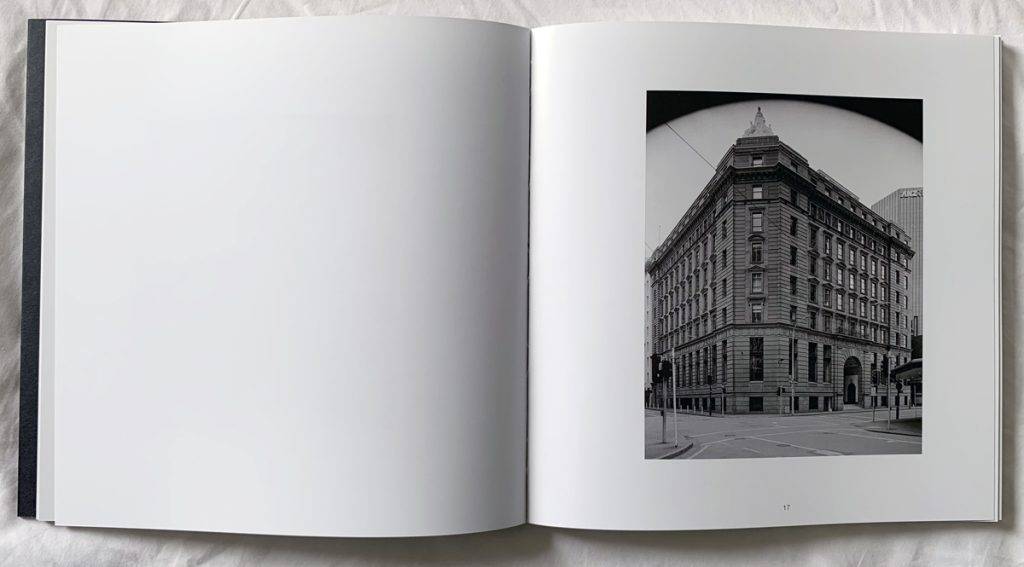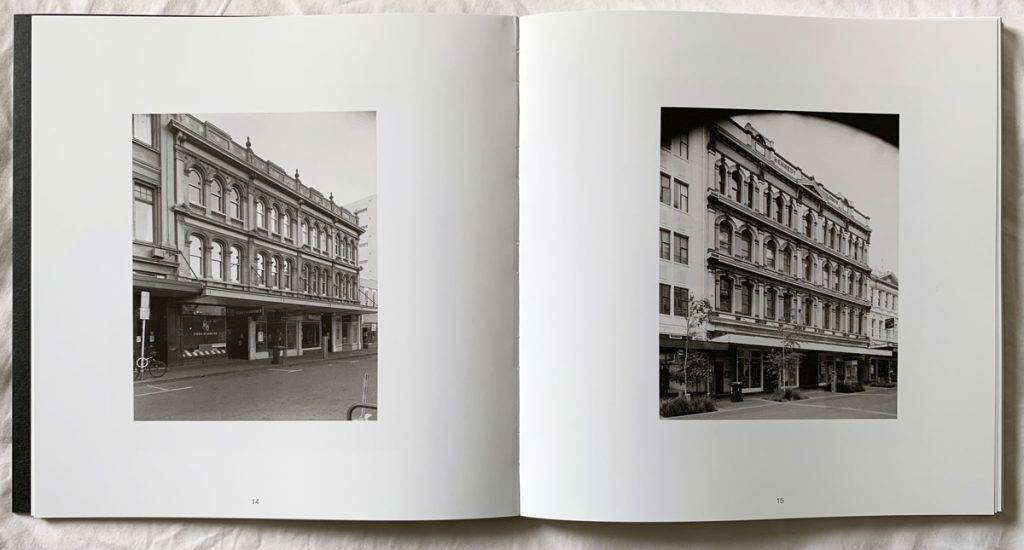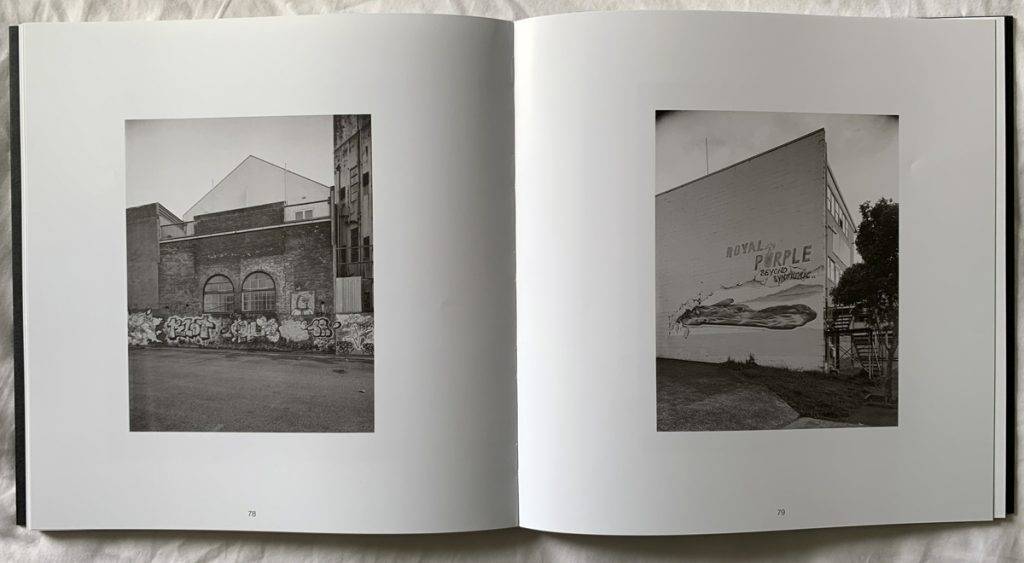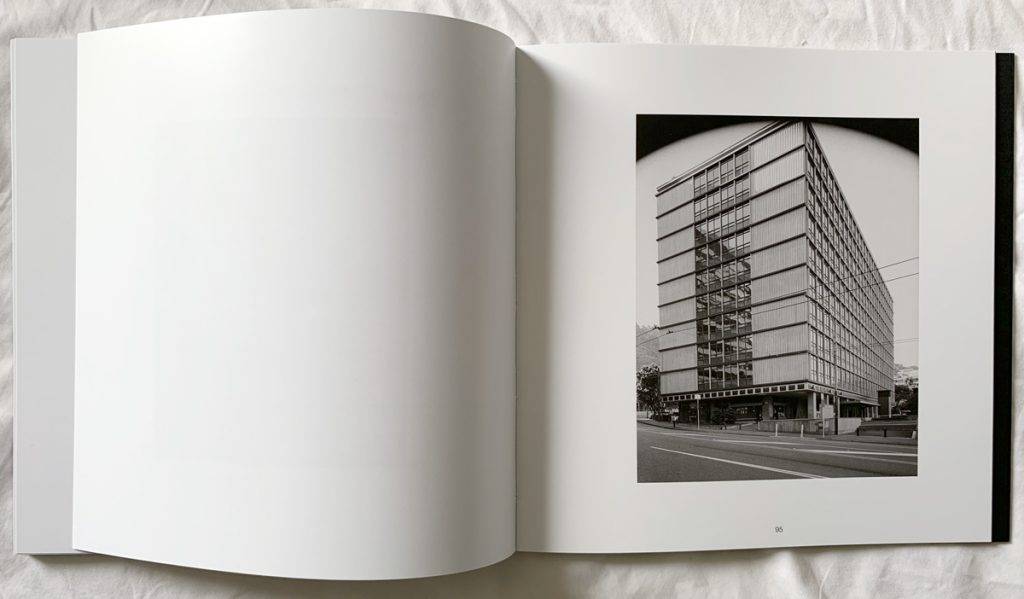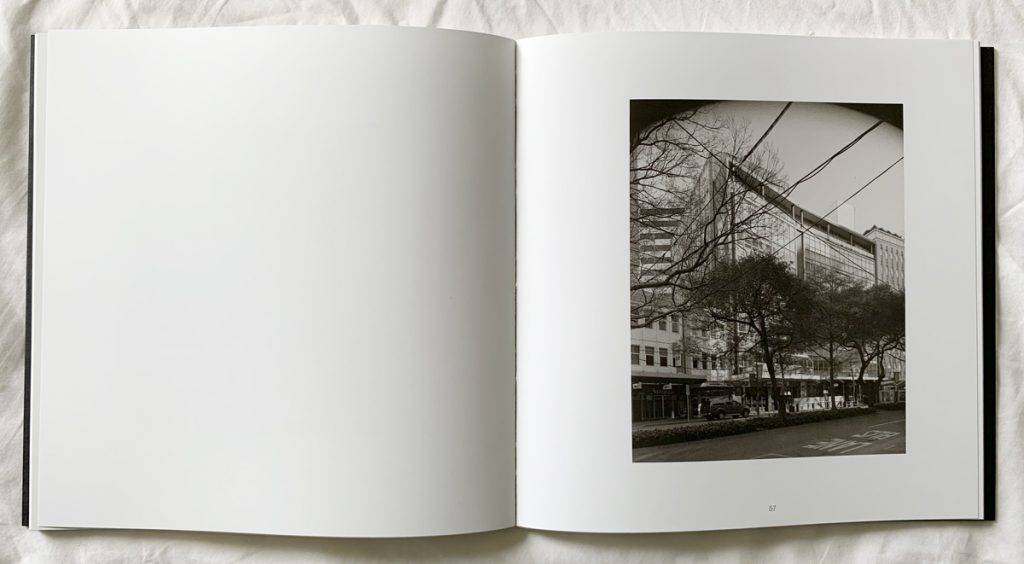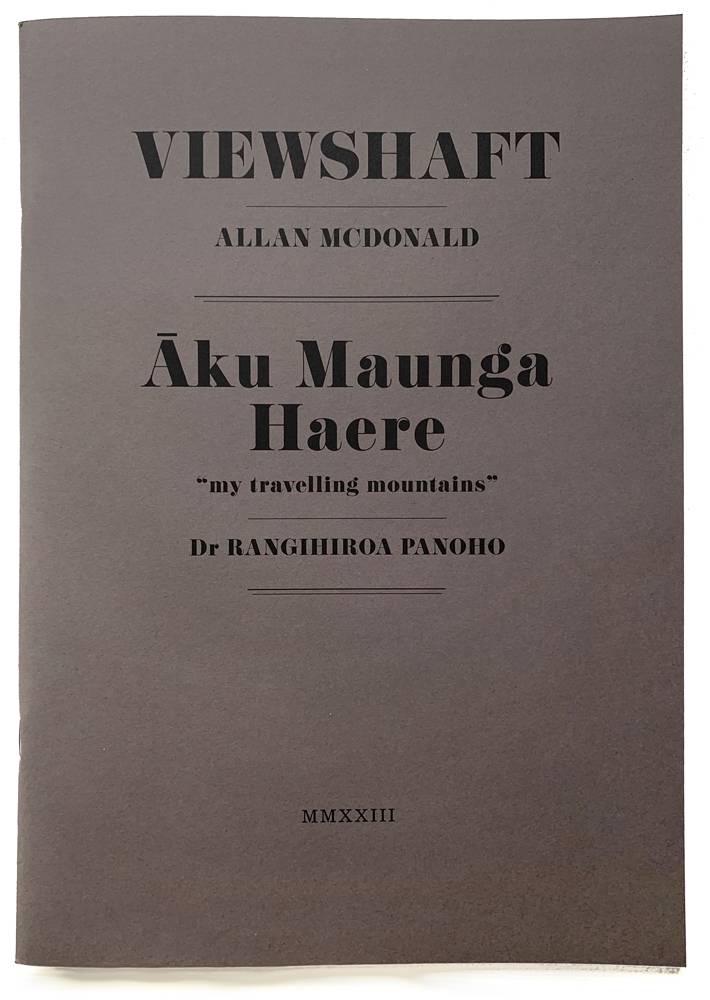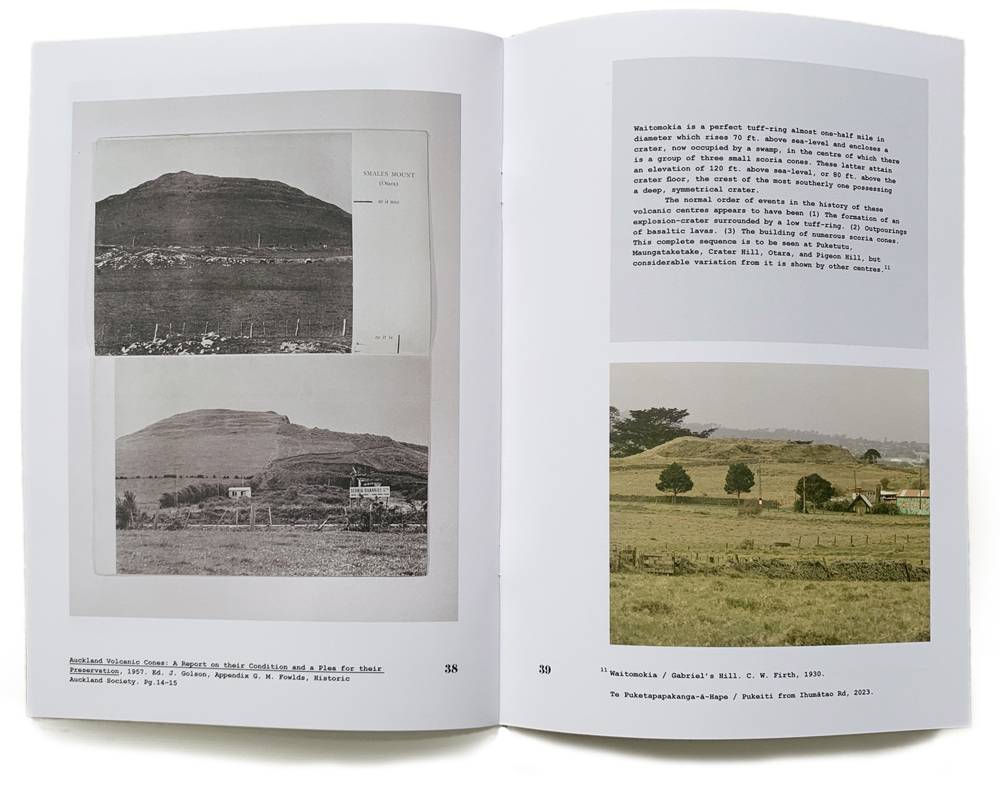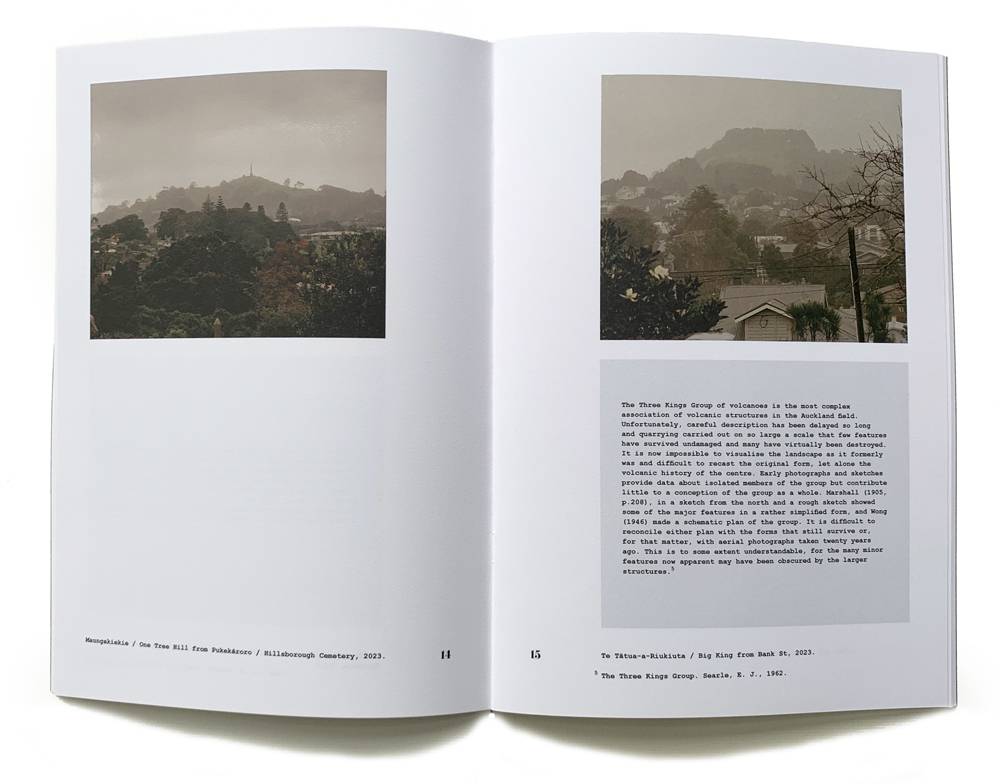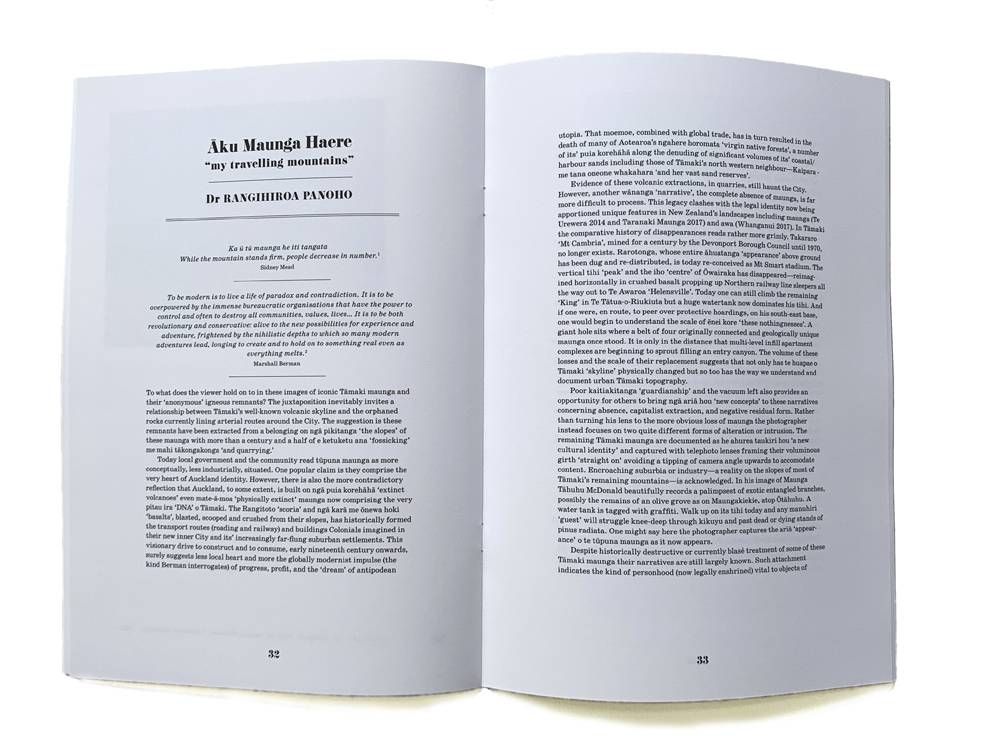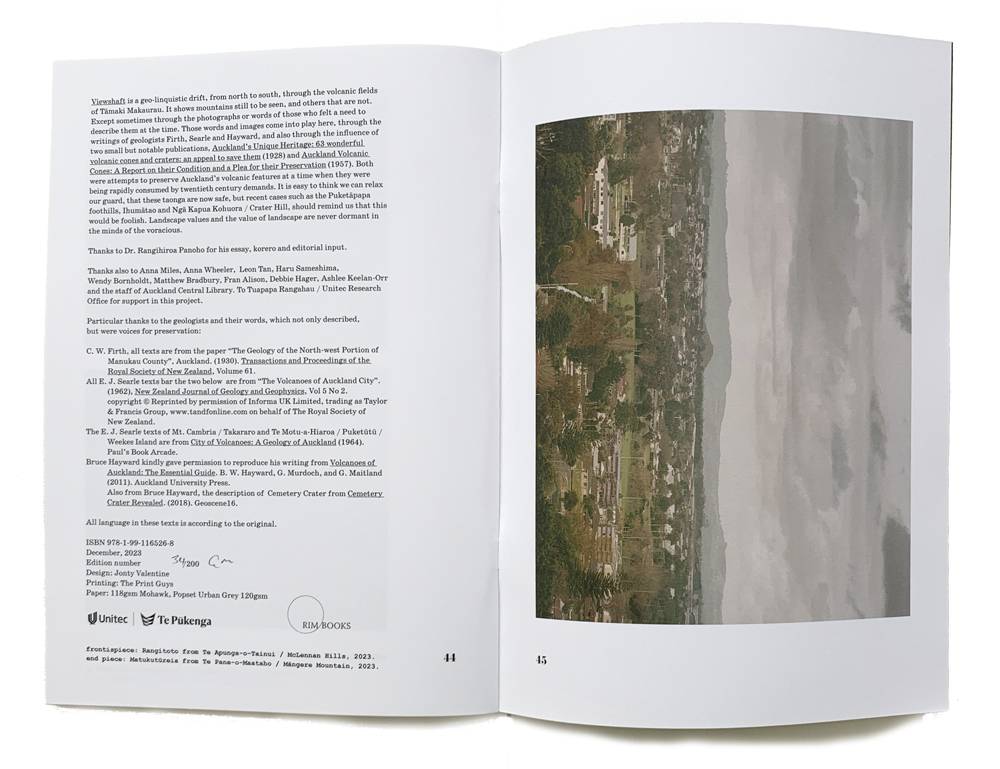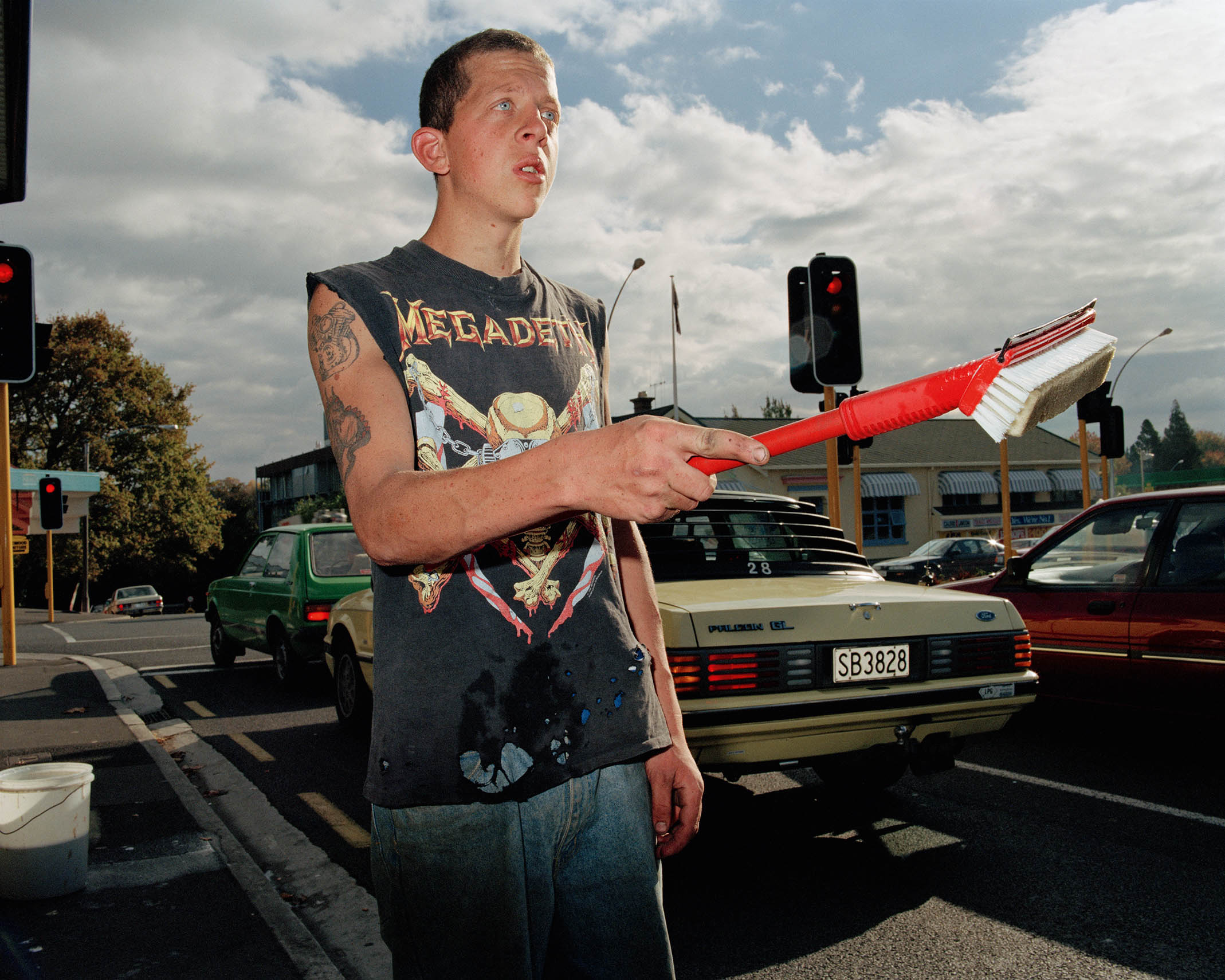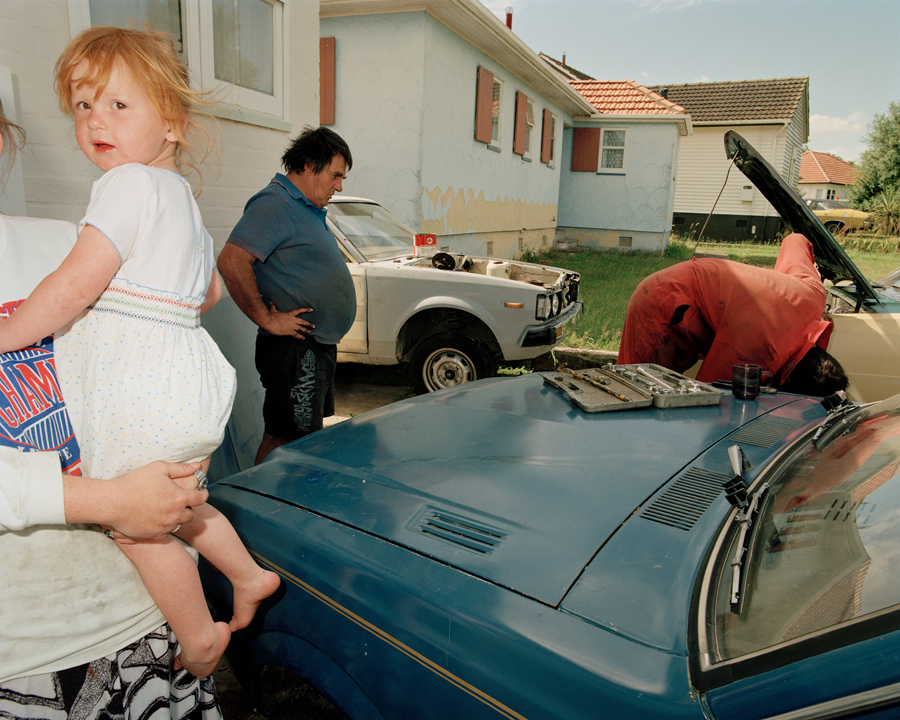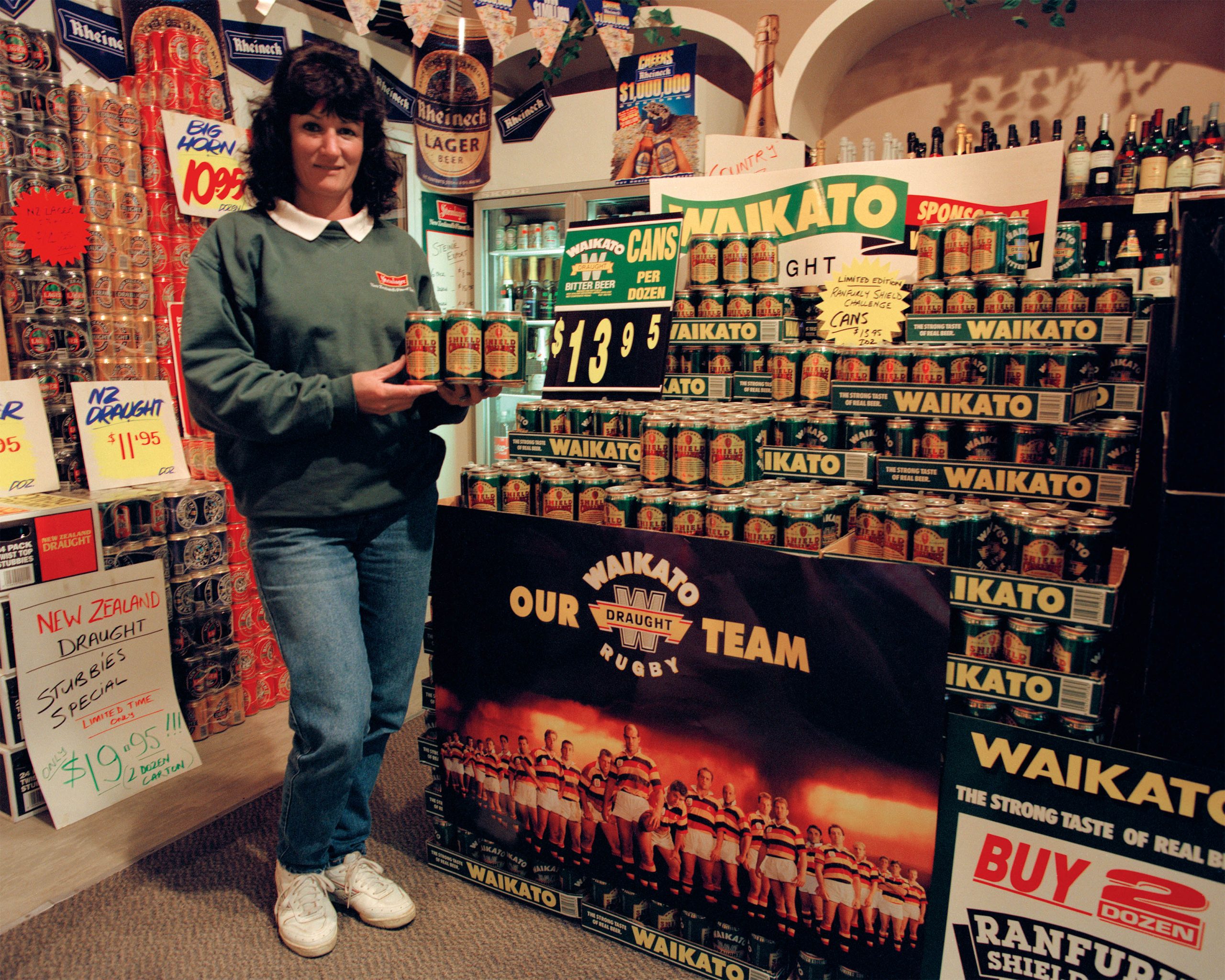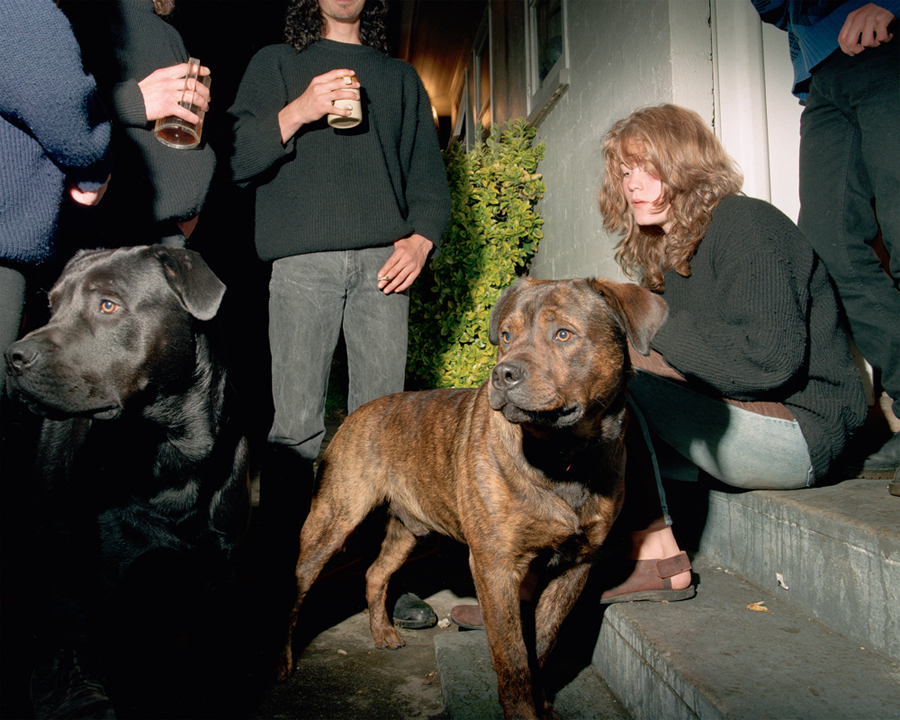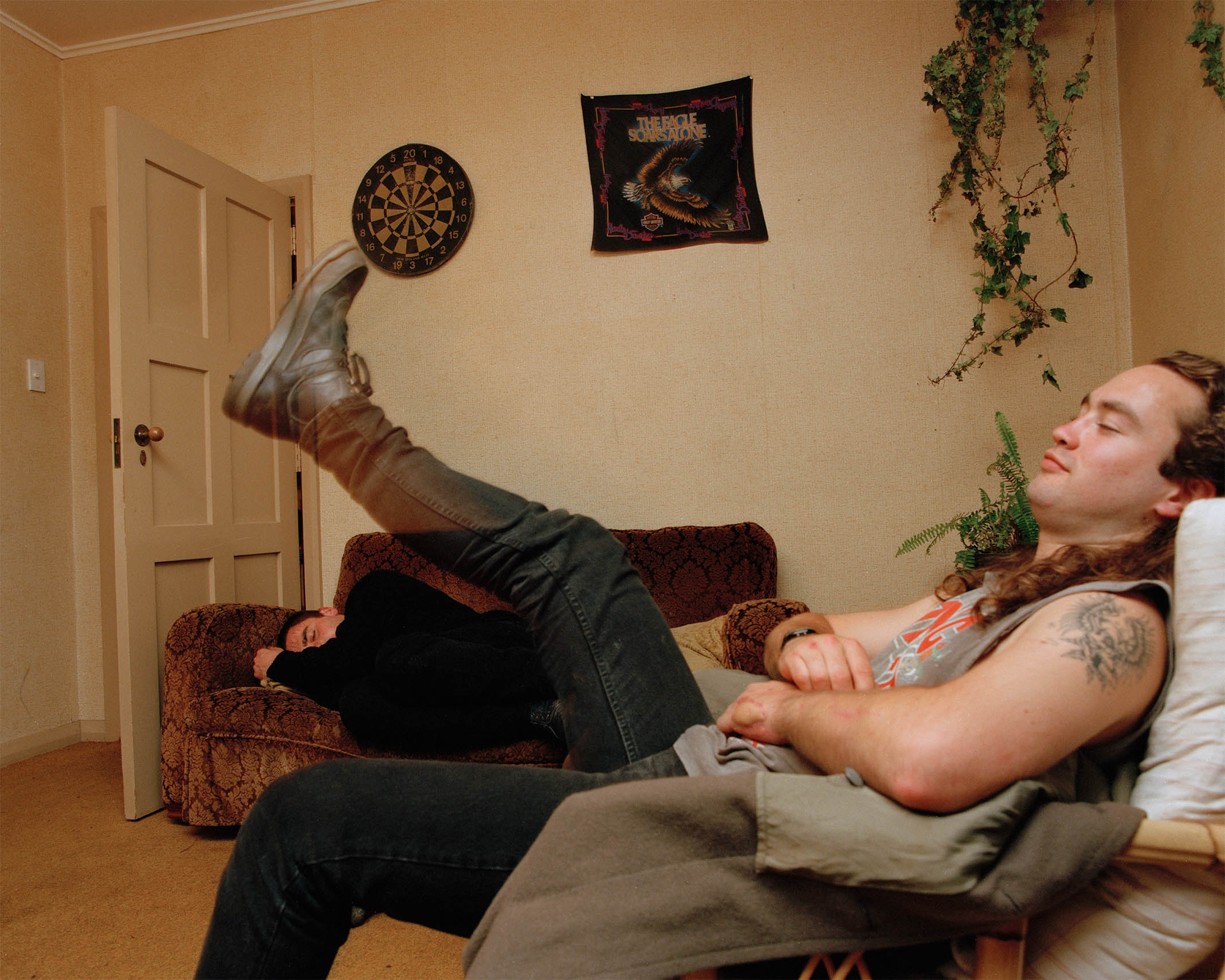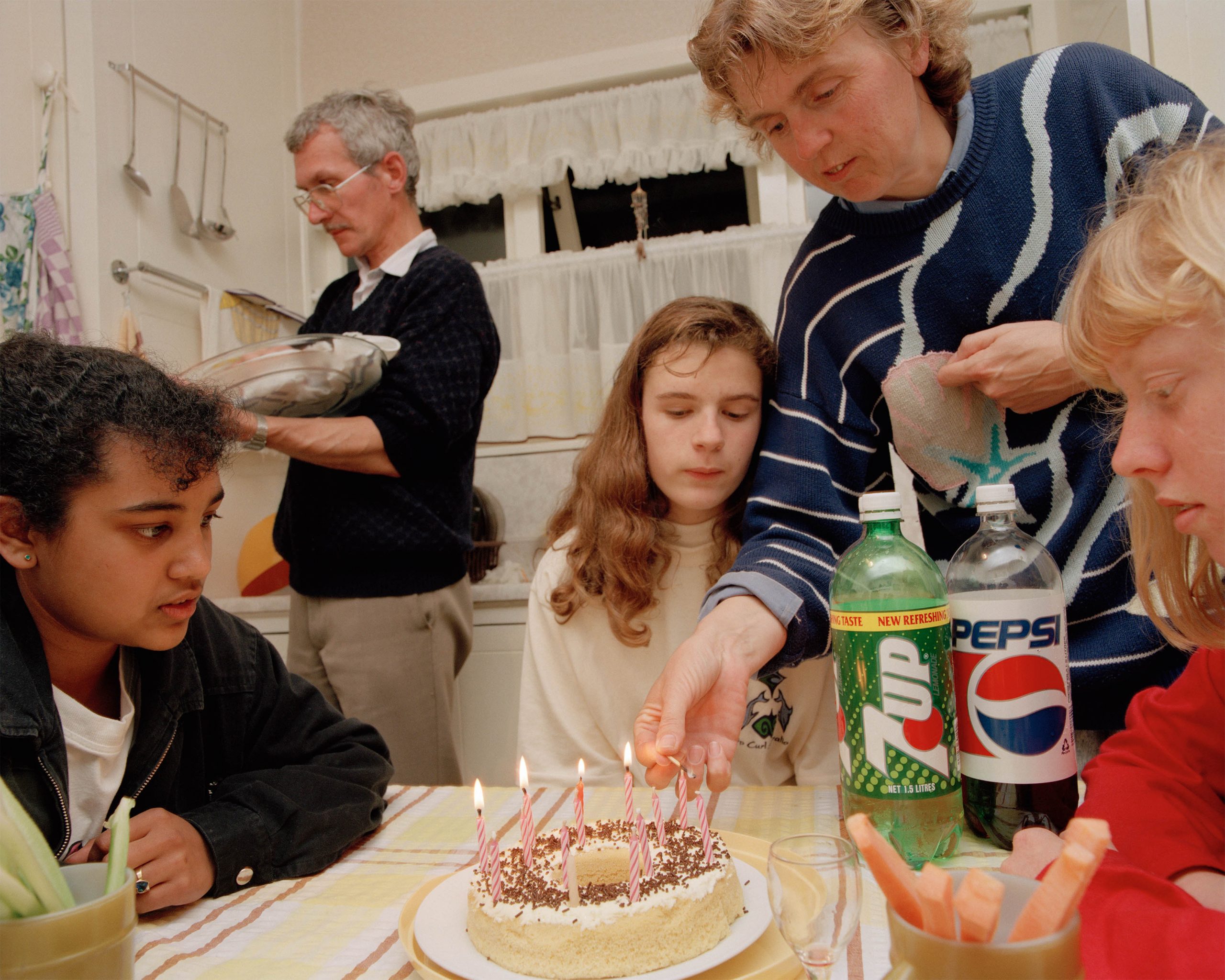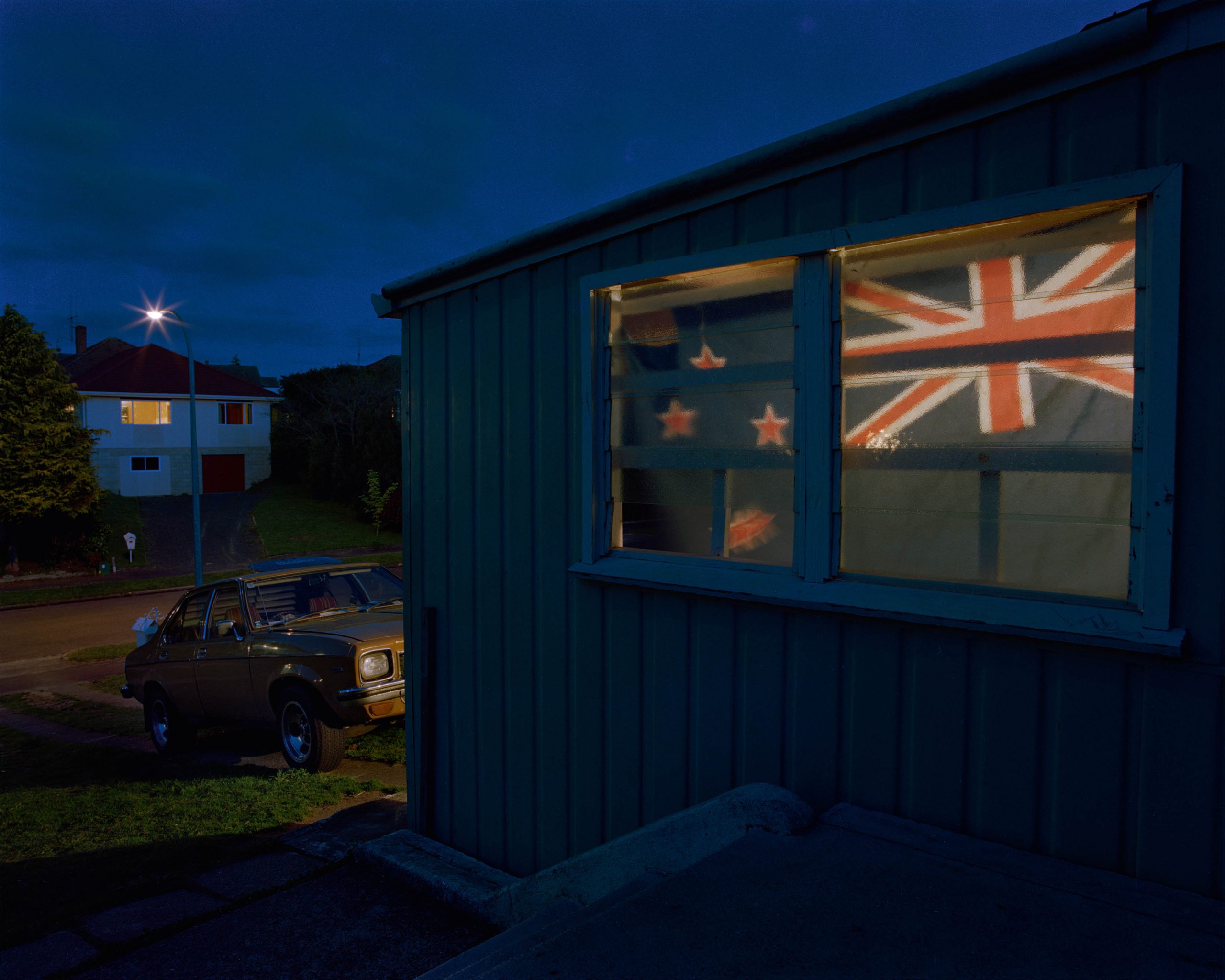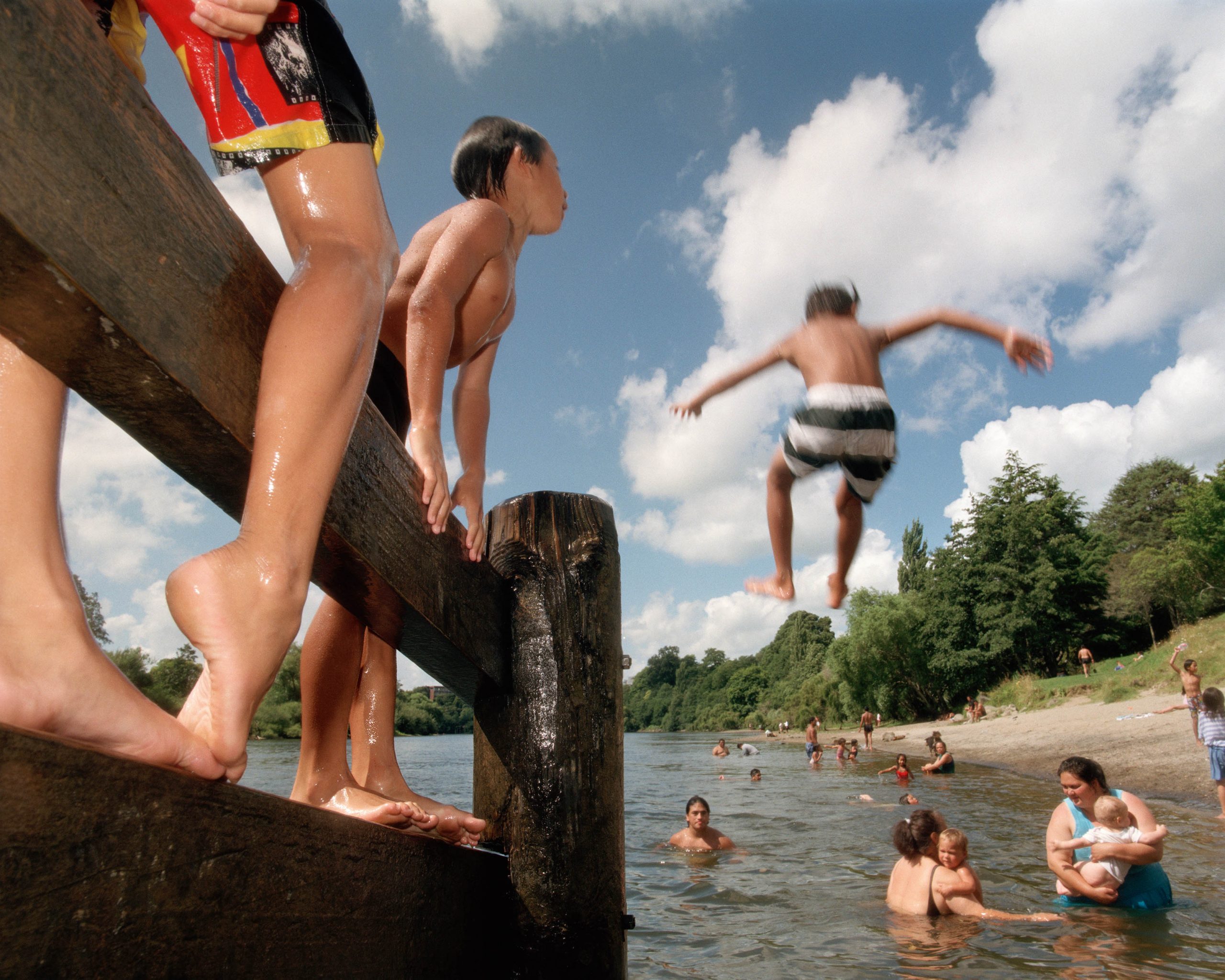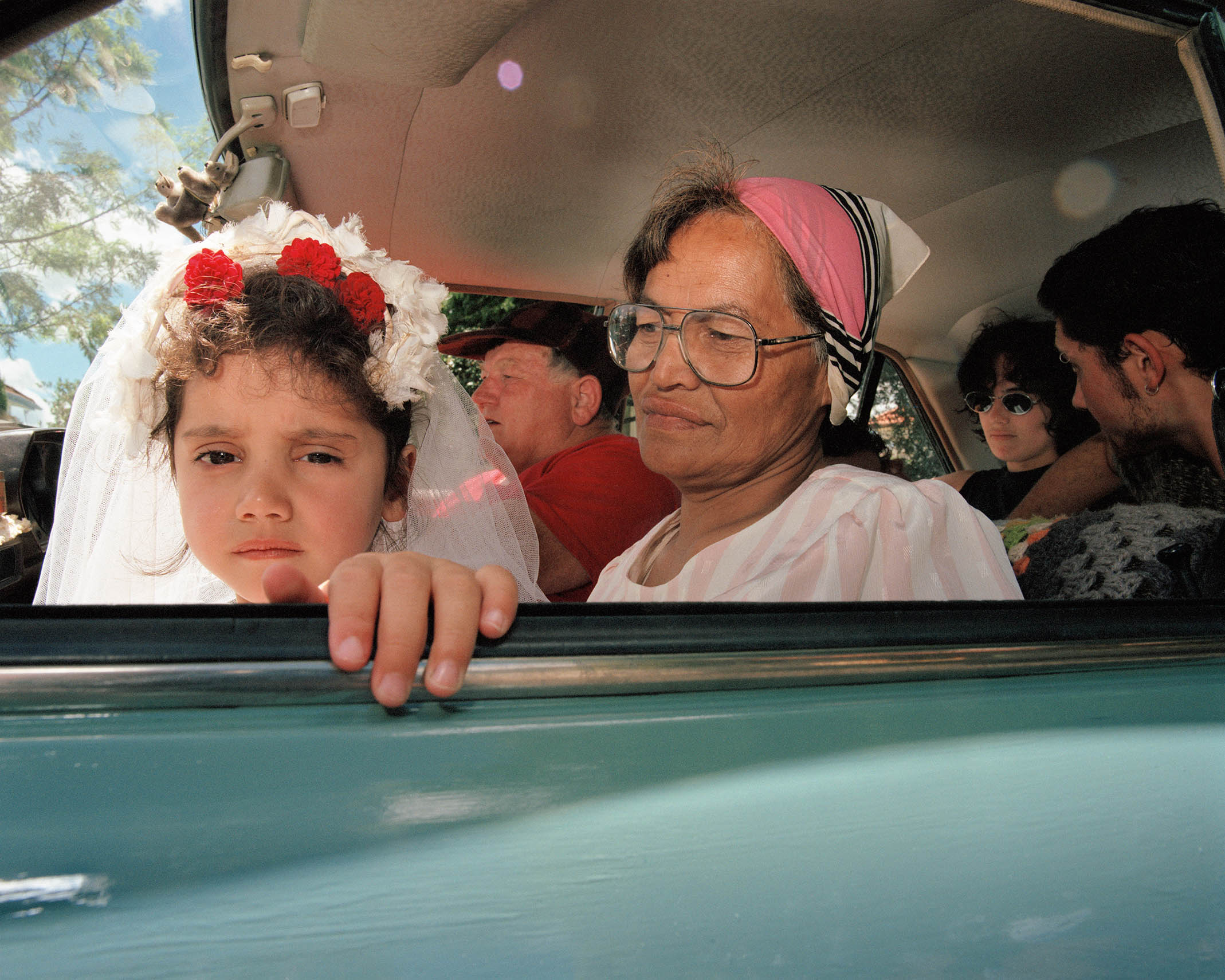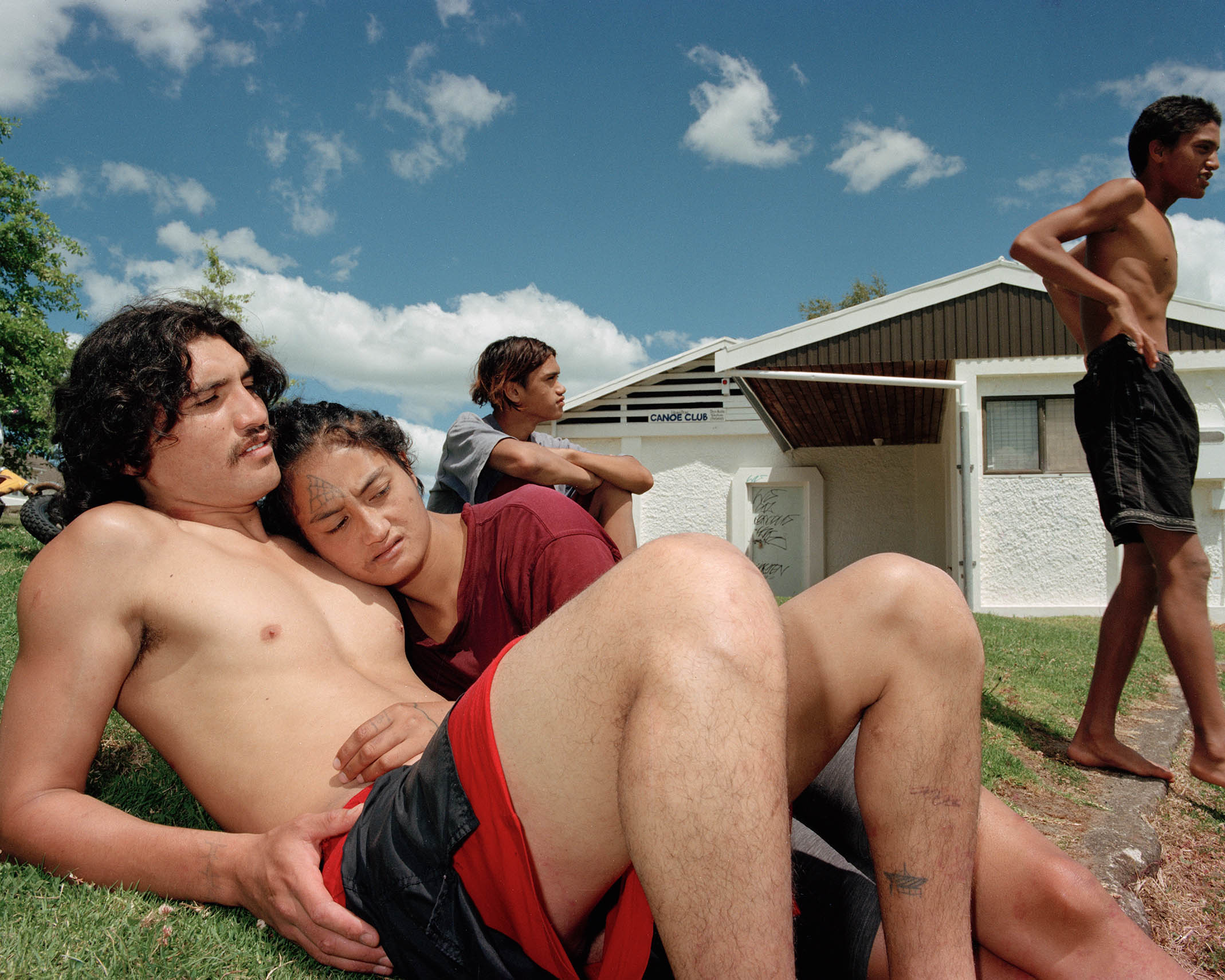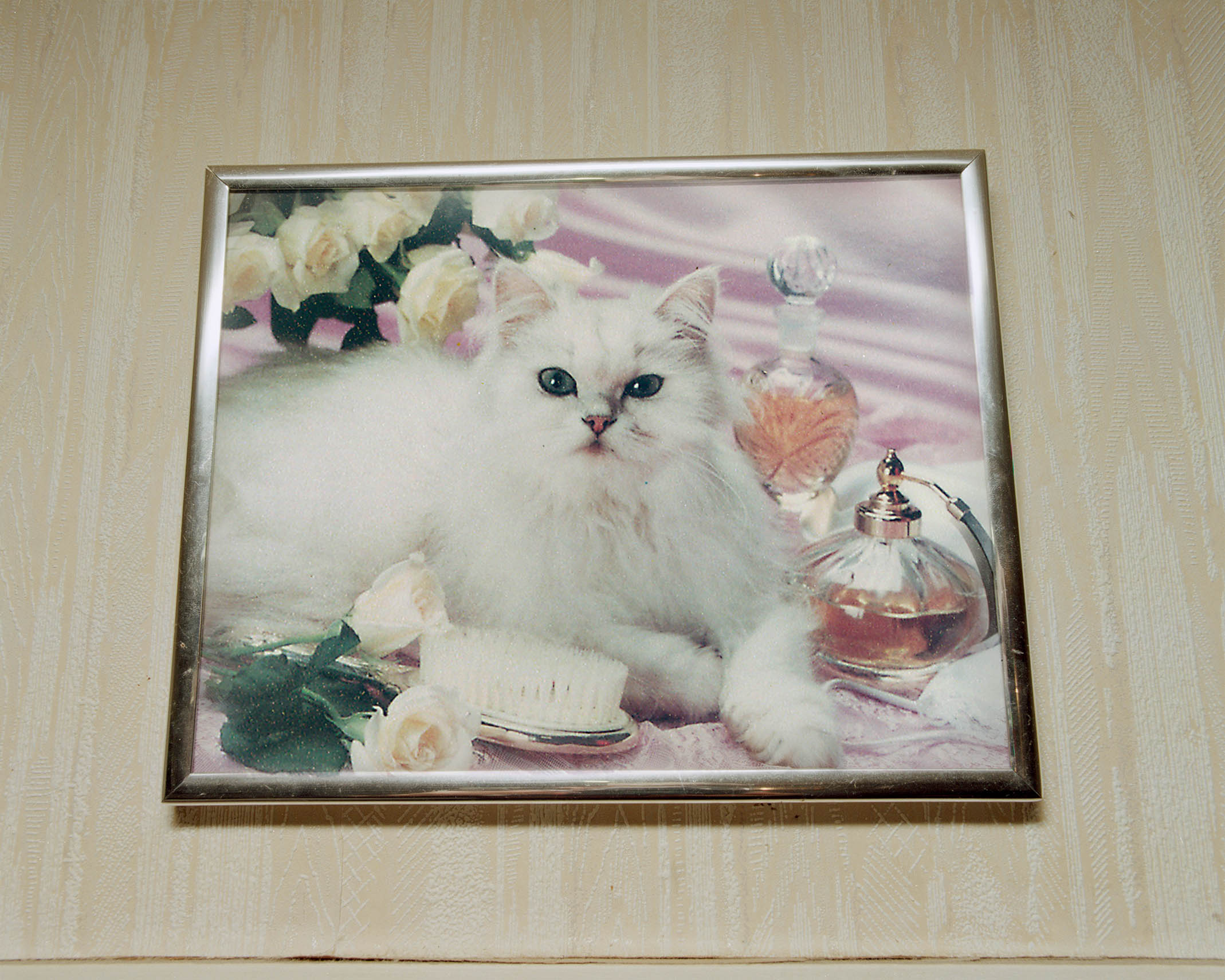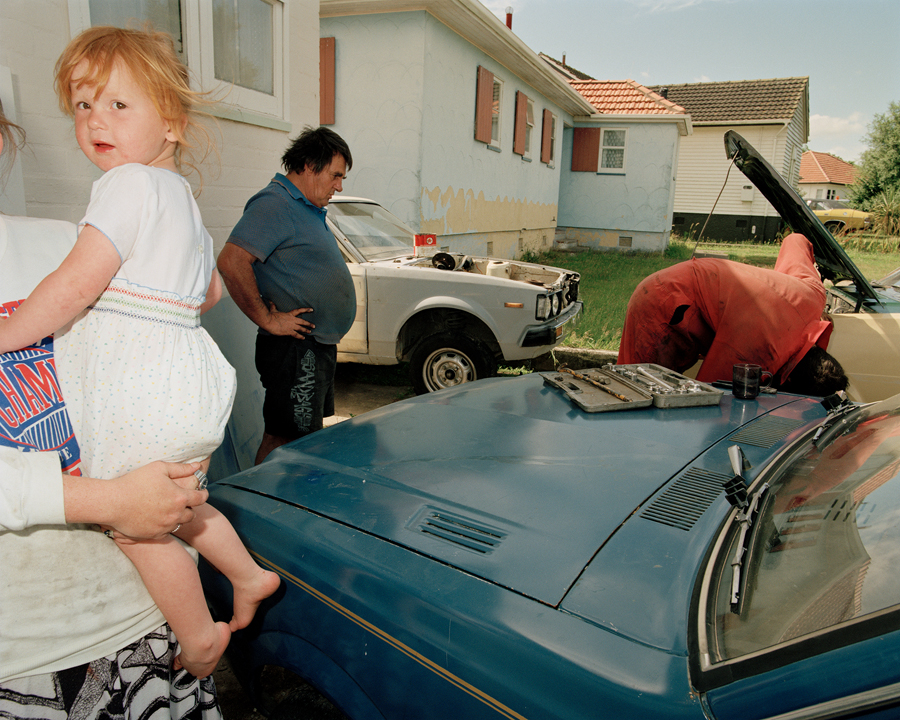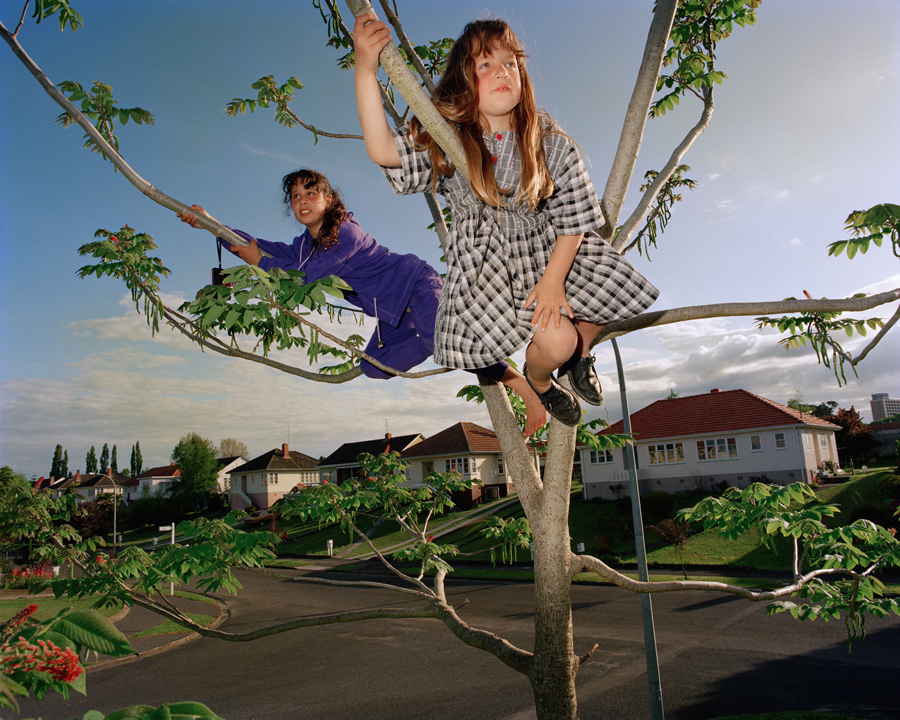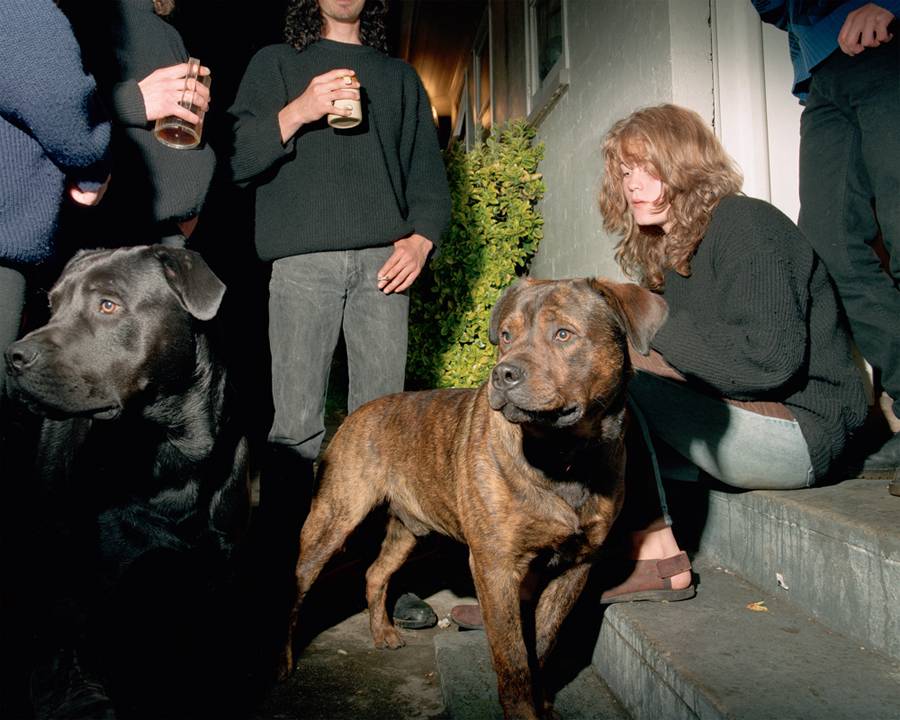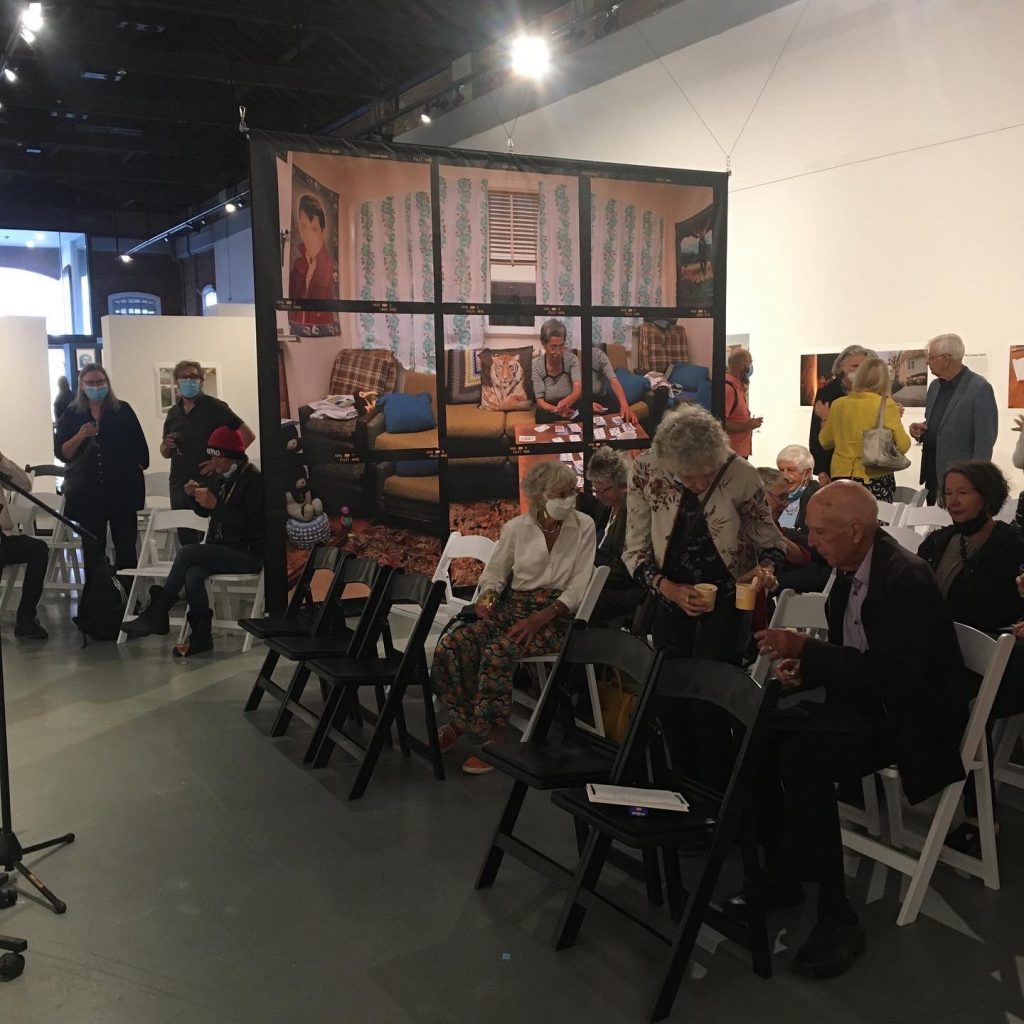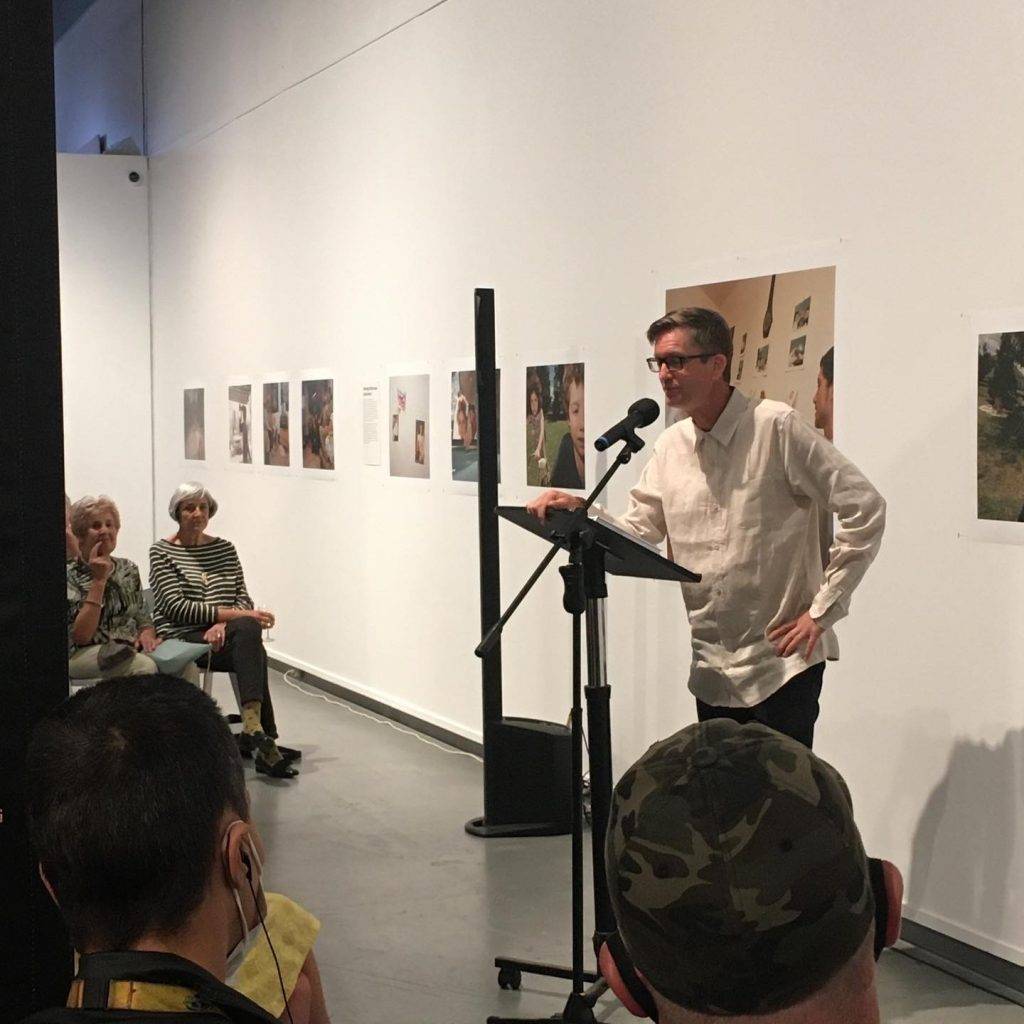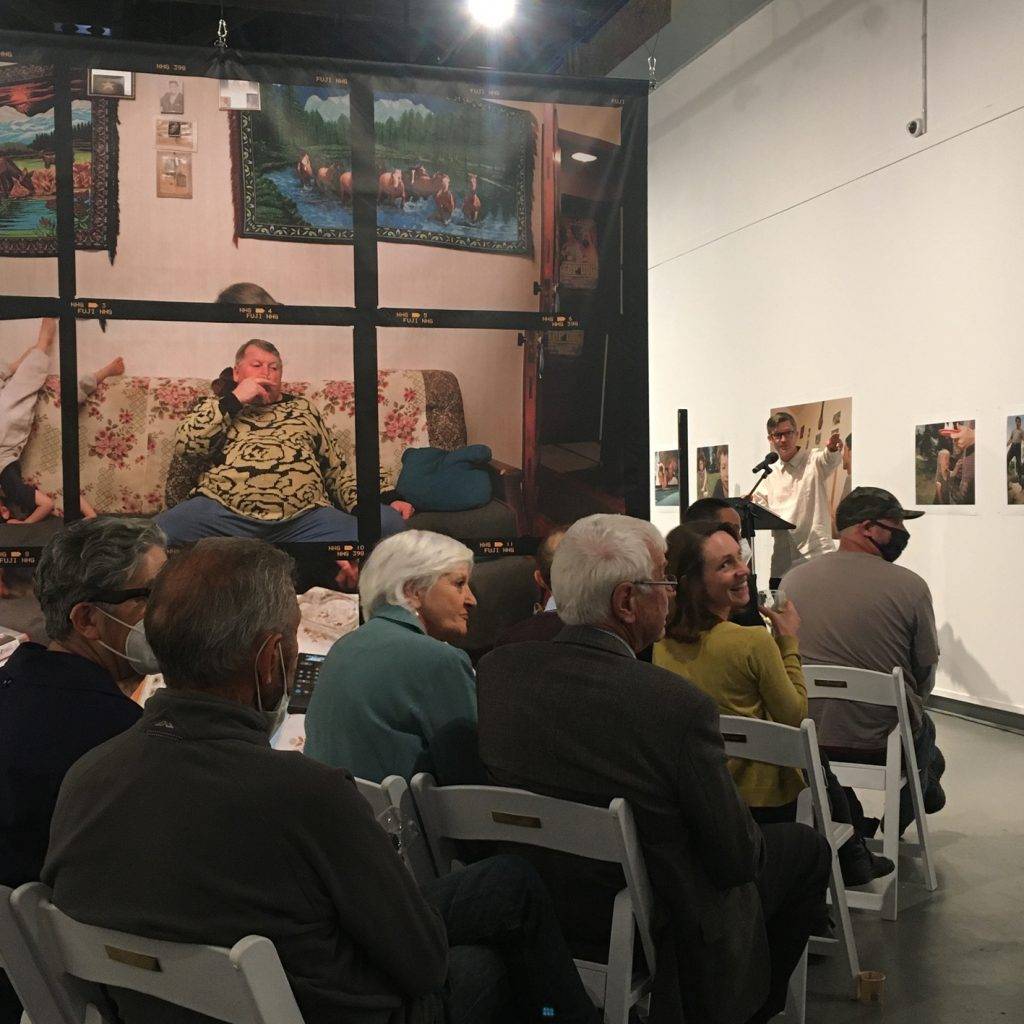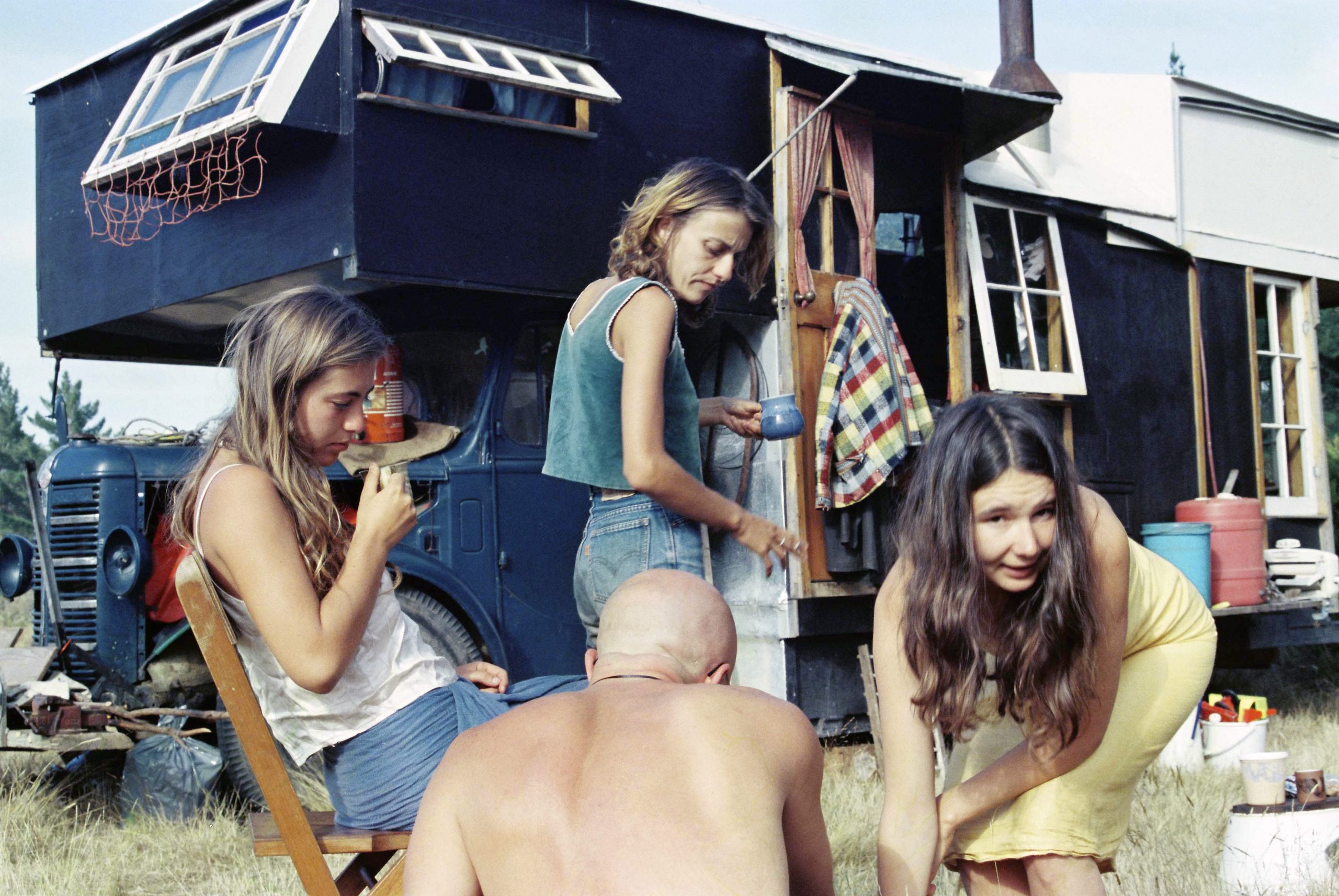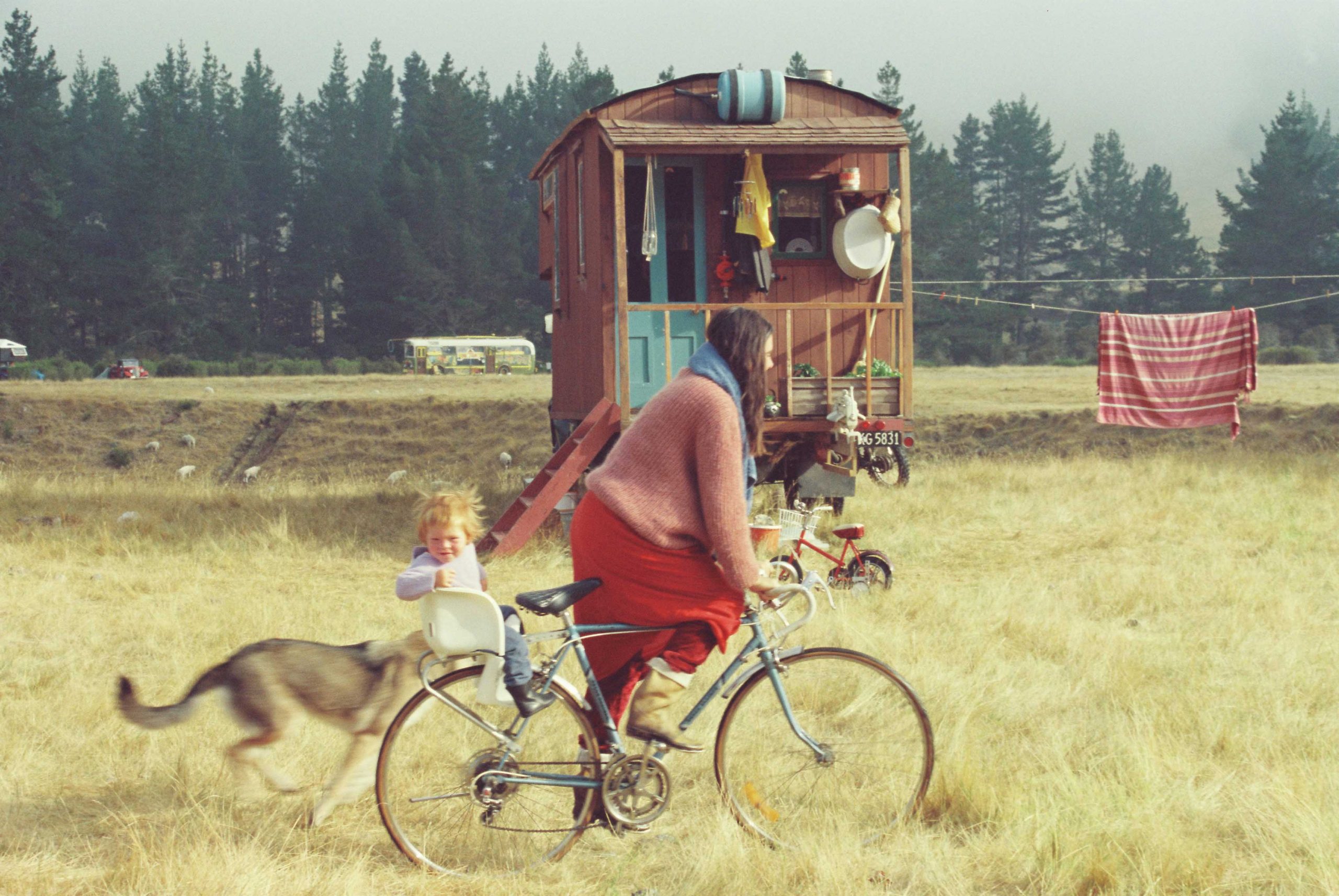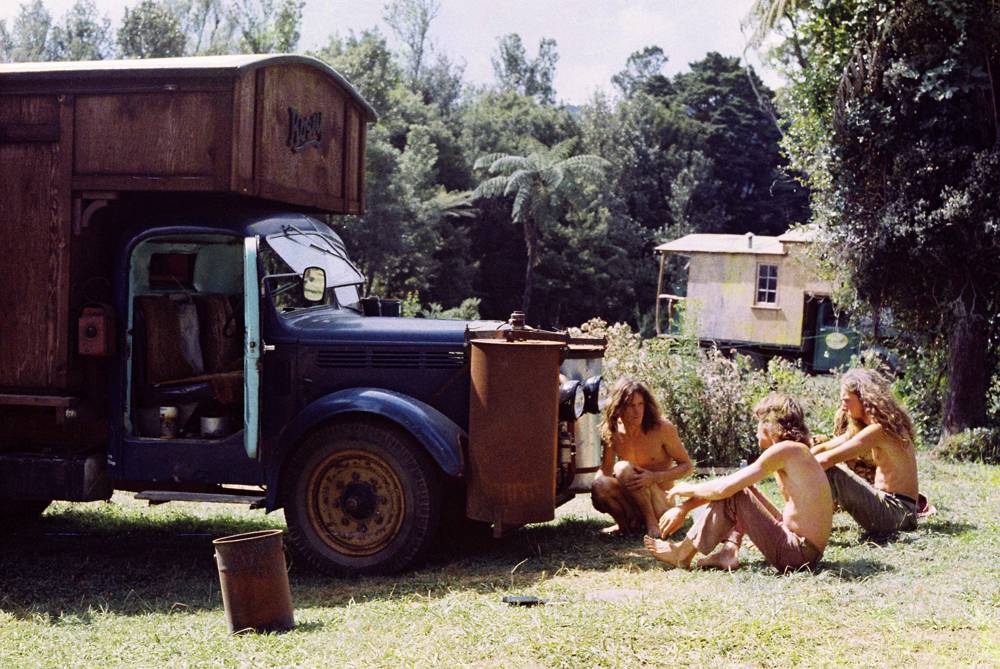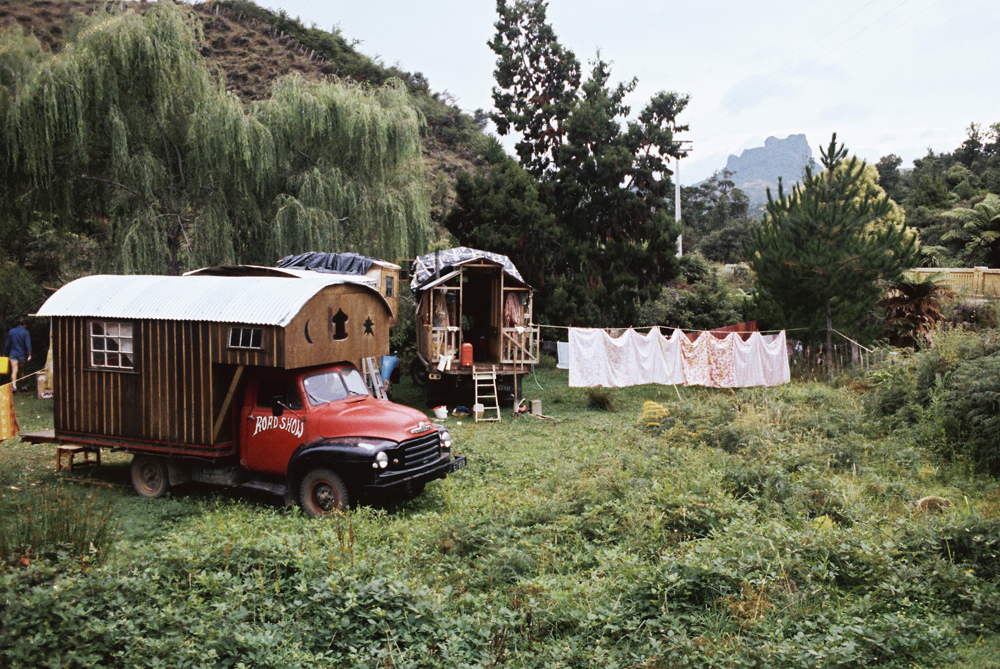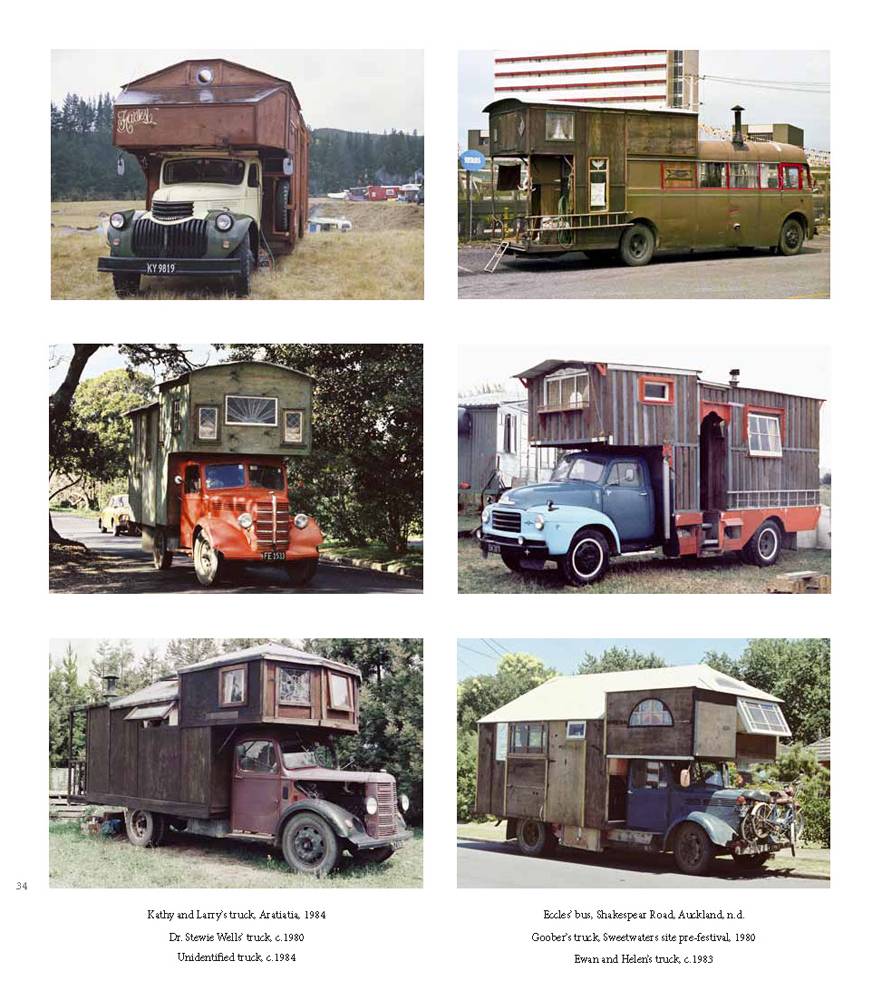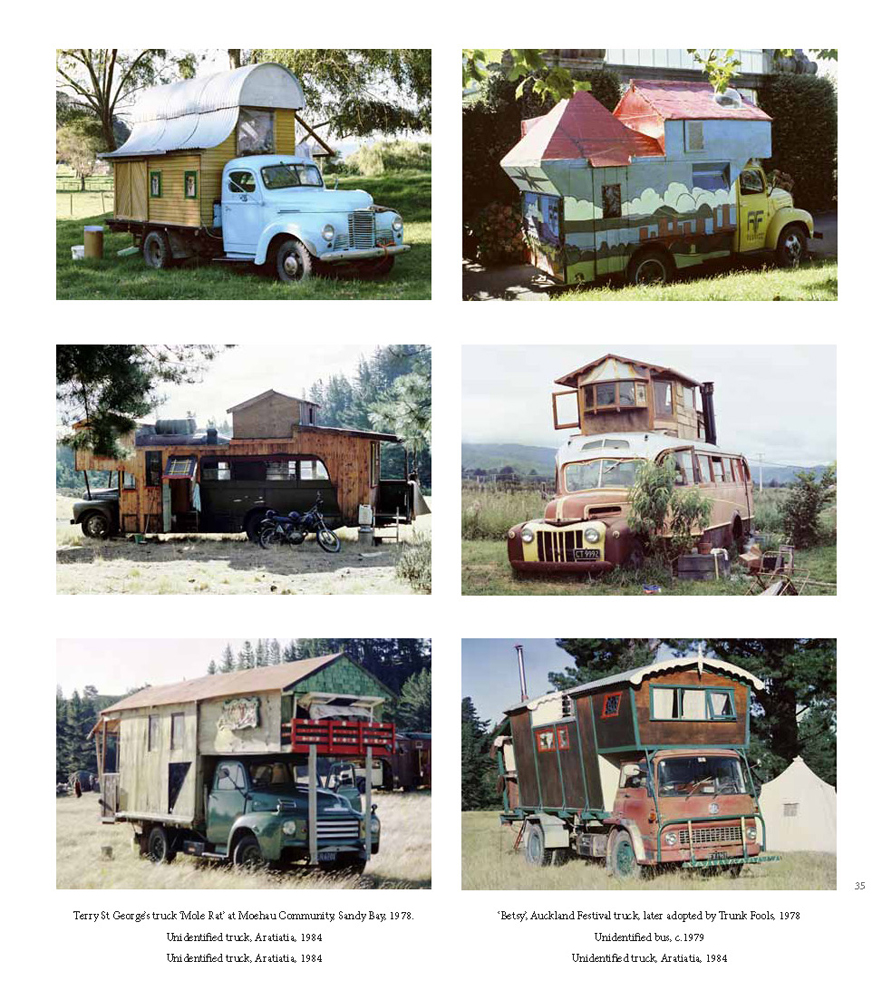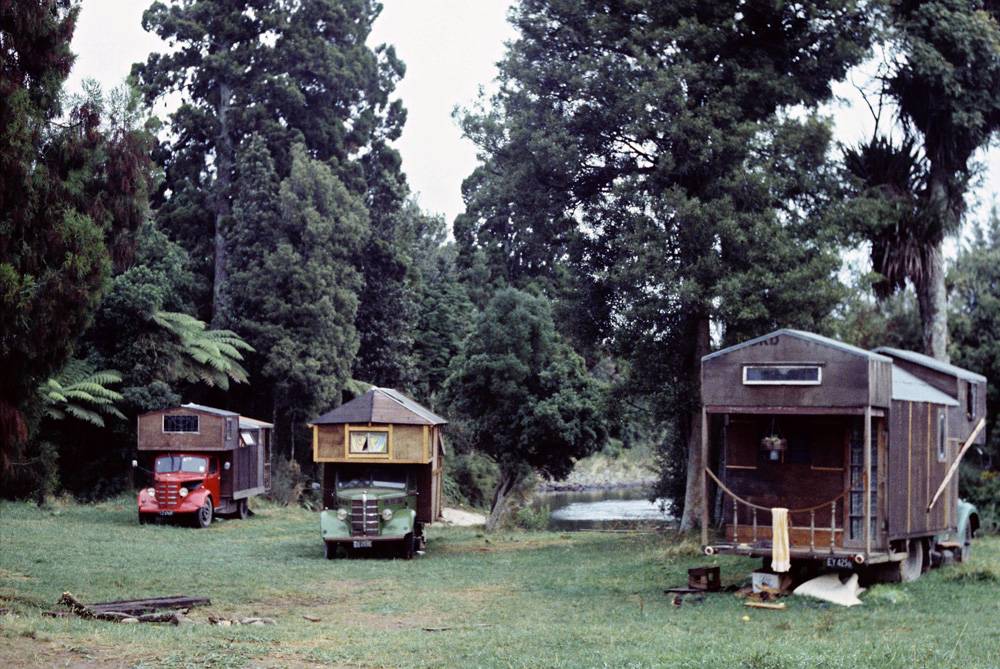Category Archives: Architecture
an invisible hand
an invisible hand
Stephen Roucher
An Invisible Hand is Stephen Roucher’s first artist’s book, from his street photographs made between 2012 and 2022.
In an era where modern technology offers precise navigation and ubiquitous ‘street-view’ convenience, locations are catalogued and made explicit through GPS coordinates and addresses. Commerce and progress drive these technologies, shaping our environment and perceptions of it.
Roucher invites us to consider a machine-driven perspective from another era with his black-and-white photographs made using a view camera, a cutting-edge technology of the 19th century that radically reshaped our perceptions of the world. He captures the urban landscape not with the precision of contemporary tools but with an eye for the timeless and the unseen. The photographs delve into the nuances of public spaces, the rejuvenation of forgotten corners, and the artifacts of once-daily technologies now obsolete. Roucher juxtaposes the meticulously catalogued present with a more ambiguous, reflective view. The book brings to life locations vaguely referenced, ideas repurposed, and the subtle transformations of environments in constant flux. These photographs serve as a testament to the invisible hand guiding our perceptions and interactions with the world.
Stephen Roucher is an independent photographer, based in Wellington Te Whanganui-a-Tara. Since graduating from Elam School of Fine Arts in 1995, he has accumulated an archive of conceptually focused series of photographs, depicting the urban and rural environments. His practical experience in the process of photography, both analogue and digital, informs his approach to making his art. He had solo exhibition ‘Stands’ (series of stands mostly from rural sports fields) at Whangarei Art Museum in 2011 and McNamara Gallery, Whanganui in 2012, ‘Void’, an installation in the iconic TestStrip gallery in Auckland in 1995. His photographs were featured in many group shows – including in Now & Then: Enduring and developing themes in contemporary New Zealand photography, Te Manawa, Palmerston North, in 2012.
June 2024
ISBN: 978-1-99-116527-5
Pages: 108pp, with offset duotone
Format: card jacket, section sewn
Dimensions: 245 x 240 x 11mm
RRP $75.00 (limited hand-bound edition of 150)
For all wholesale orders and requests info@rimbooks.com
VIEWSHAFT
Viewshaft
Allan MacDonald and essay by Rangihiroa Panoho. Designed by Jonty Valentine
Viewshaft is a geo-linquistic drift, from north to south, through the volcanic fields of Tāmaki Makaurau. It shows mountains still to be seen, and others that are not. Except sometimes through the photographs or words of those who felt a need to describe them at the time. Those words and images come into play here, through the writings of geologists Firth, Searle and Hayward, and also through the influence of two small but notable publications, Auckland’s Unique Heritage: 63 Wonderful Volcanic Cones and Craters. An Appeal to Save Them (1928) and Auckland Volcanic Cones: A Report on Their Condition and a Plea for Their Preservation (1957). Both were attempts to preserve Auckland’s volcanic features at a time when they were being rapidly consumed by twentieth century demands. Viewshaft is accompanied by an essay by Dr. Rangihiroa Panoho, ‘Āku Maunga Haere’ (my travelling mountains).
“Viewshaft is testimony to his continuing gaze at the volcanic maunga that have an iconic presence in Tāmaki Makaurau. Aucklanders live on and in the shadow of these maunga and the recent public debates about how their tihi ‘their sacred high points’ are planted and the replacement of exotic with natives shows just how much passion these natural forms generate. Tāmaki Makaurau is indeed still a land ‘desired by hundreds of lovers'”. Dr. Rangihiroa Panoho
Read the full reflection on the book and exhibition by Dr. Rangihiroa Panoho
2024
ISBN: 978-1-99-116526-8
Pages: 46pp, with colour reproduction
Format: Soft cover saddle-stitched
Limited edition 200: signed and numbered
Dimensions: 298mm x 210mm
RRP $60.00
For all wholesale orders and requests info@rimbooks.com
Jellicoe & Bledisloe
Jellicoe & Bledisloe
David Cook
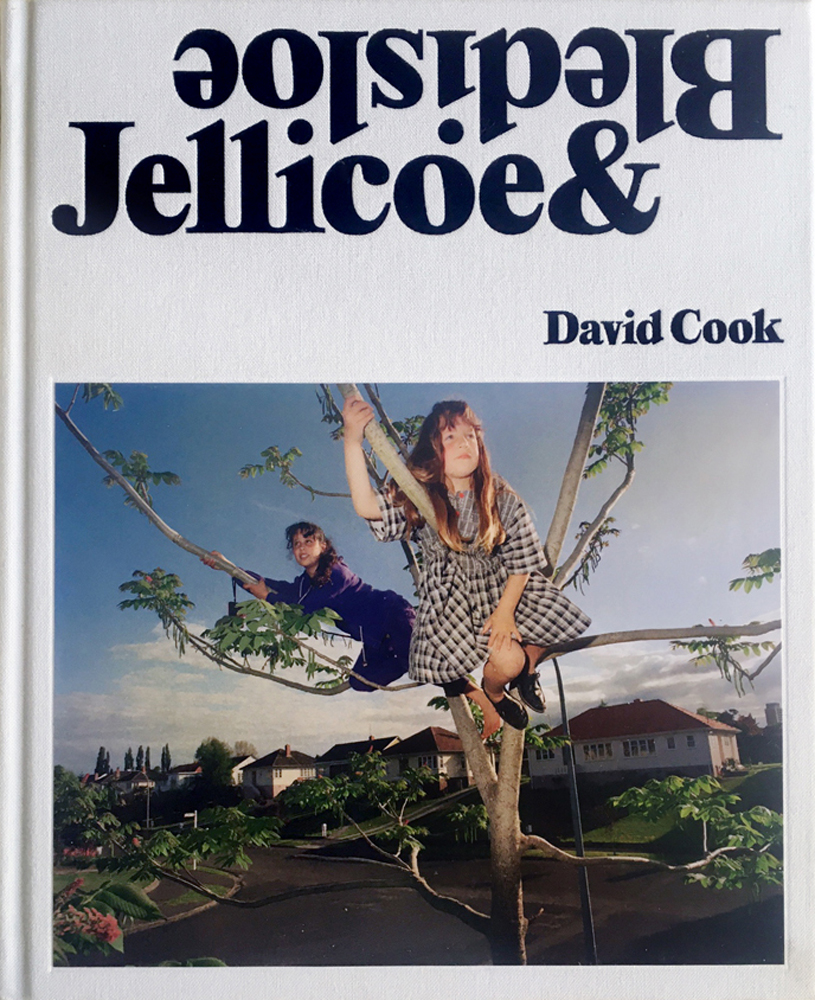 When David Cook moved to Hamilton East, he was drawn to the colourful and creative lives of his neighbours. With camera in hand, he explored everything from front-yard mechanics to Sunday roasts, creating an intimate documentary of a State Housing suburb in the 1990s, moments before gentrification set in. In this energetic photobook, we look back twenty-five years to see burgeoning issues of relevance today: housing, bi-cultural relations, social welfare, and freshwater quality, all brought to us through the lens of daily life.
When David Cook moved to Hamilton East, he was drawn to the colourful and creative lives of his neighbours. With camera in hand, he explored everything from front-yard mechanics to Sunday roasts, creating an intimate documentary of a State Housing suburb in the 1990s, moments before gentrification set in. In this energetic photobook, we look back twenty-five years to see burgeoning issues of relevance today: housing, bi-cultural relations, social welfare, and freshwater quality, all brought to us through the lens of daily life.
The title, Jellicoe & Bledisloe, is a reference to the local street names, commemorating New Zealand Governors General from the early twentieth century. Reflecting on this colonial heritage, Cook writes an engaging first-person account of the suburb, featuring a conversation with Ngaati Wairere historian Wiremu Puke. Together they unearth suppressed histories and rewrite our understanding of the Waikato landscape.
Te Papa Tongarewa holds a significant collection of photographs from this series. The work is also featured in an exhibition Jellicoe & Bledisloe: Hamilton in the 90s – David Cook at the New Zealand Portrait Gallery / Te Pūkenga Whakaata, Wellington (24 Feb – 15 May 2022).
David Cook’s photo-documentaries deal with communities in transition. Publications include Lake of Coal: the Disappearance of a Mining Township (finalist in the 2007 Montana New Zealand Book Awards), Meet me in the Square: Christchurch 1983-1987 (winner of the 2015 MAPDA Exhibition Catalogue Award – major) and River Road: Journeys through Ecology.
David Cook interviewed by Lynn Freeman in Standing Room Only
RRP $50.00
hardback | 108 pages
245 x 200 mm
ISBN 978-0-9951184-8-5
Publication: February 2022
Design: Sam Fraser and David Cook
For all wholesale orders and requests info@rimbooks.com
Exhibition and book
Jellicoe & Bledisloe: Hamilton in the 90s – David Cook
- Wednesday, 23 February 2022 10:00 am – Sunday, 15 May 2022 11:00 am
- New Zealand Portrait Gallery Te Pūkenga Whakaata Shed 11, 60 Lady Elizabeth Lane Wellington New Zealand (map)
When photographer David Cook moved into Hamilton East, he was drawn to the colourful, creative and chaotic lives of his neighbours. With camera in hand, he explored back-yard mechanics to Sunday roasts, inventing an intimate documentary of a State Housing suburb in the 90s, moments before gentrification set in.
Books will be available from this site from February 25th.


Road People of Aotearoa: Images of house-truck journeys 1978-1984
Road People of Aotearoa: Images of house-truck journeys 1978-1984
Photographs by Paul C Gilbert
Foreword by Michael Colonna
Essays by Haru Sameshima and John B Turner
 A historic photo-essay by the late Paul C. Gilbert, this book chronicles the early days of the New Zealand phenomenon of DIY house trucks, which appeared on the roads around the mid-1970s as part of an alternative lifestyle movement. The house-truckers were drawn to the alternative life and music festivals of the time, including Nambassa in the late 1970s and Sweetwaters festivals in the early 1980s. Paul Gilbert travelled with the grass-roots music and performance troupes in their convoys of hand-converted house trucks starting with ‘The Original Travelling Road Show and Mahana’, as they journeyed through small communities and music festivals around the North Island.
A historic photo-essay by the late Paul C. Gilbert, this book chronicles the early days of the New Zealand phenomenon of DIY house trucks, which appeared on the roads around the mid-1970s as part of an alternative lifestyle movement. The house-truckers were drawn to the alternative life and music festivals of the time, including Nambassa in the late 1970s and Sweetwaters festivals in the early 1980s. Paul Gilbert travelled with the grass-roots music and performance troupes in their convoys of hand-converted house trucks starting with ‘The Original Travelling Road Show and Mahana’, as they journeyed through small communities and music festivals around the North Island.
Paul Gilbert’s camera intimately observes the road people while building and decorating the house trucks with their wonderful interiors and also in their everyday activities. He captures their children and families and the fringe circus and musical performances in various festivals and different locations. Throughout the 1970s and 1980s, many house truck conventions and grass-roots festivals around a variety of themes were held in New Zealand where house-truckers would converge, not only for the event but for the opportunity to connect and share information with other truckers. Low-key festival circuits could be found in regions of Coromandel, Northland, and West Auckland, where, for two decades, Moller’s farm at Oratia west of Auckland, a popular venue for blues and folk festivals, offered an open house for truckers to park on a semi-permanent basis as needed. These were unique times indeed.
Paul C Gilbert (1954-2019) started taking photographs as a young boy via family influences. Early projects were developed as documentary street photography in the fine arts tradition when he was a founder member of PhotoForum NZ in 1973. He was employed as a photographer at the Department of Scientific and Industrial Research and then at the Auckland City Art Gallery in the 1970s. He left employment to pursue the project, ‘Road People of Aotearoa’ in 1978. Later, as an independent photographer, he mainly specialised in documenting maritime heritage, vessels and history. He was the technical instructor of photography at Elam School of Fine Arts at the University of Auckland from 1990 to 2008.
Haru Sameshima, in his essay, interviews many of the house truckers – to uncover the historical context of the musicians and street performers against the backdrop of the latter stages of the alternative life movement that manifested in the festivals and events in Paul’s photo-essay. The musicians, clowns, street performers, and their friends, who have now seen many of Paul’s photographs for the first time after 40 years, recount the festivals and road journeys in their own words. John B Turner, influential photography teacher at Elam School of Fine Arts from 1971 to 2011 – in his essay reflects upon Paul’s life as an individual and a photographer – and situates his image-making in the international movement of personal documentary photography, as an embedded observer of life, rather than outsider reporter/photojournalist.
Without a counterculture, what chance has the mainstream culture of improving, growing and diversifying? As well as being vehicles of imagination, poetry and a romantic life-concept, the vehicles photographed by Paul Gilbert have become a far greater force in the country’s evolving consciousness than anyone ever expected. In the present era of small houses and mobile homes, these images offer not only a prehistory but also a soundtrack and some messages worth deciphering, written with love on the fugitive walls and ceilings of the not-so-distant past.
– Gregory O’Brien
RRP $50.00
hardback | 184 pages
275 x 235 mm | 200 illustrations
ISBN 978-0-9951184-6-1
Publication: October 2021
Read the review by Tony Watkins.
Listen to Johnny Tucker interview by Kim Hill HERE
For all wholesale orders and requests info@rimbooks.com
ENTOURAGE: aka Physical Distance Theory, or How I Learned to Stop Worrying and Love Videogames
Gallery

ENTOURAGE: aka Physical Distance Theory, or How I Learned to Stop Worrying and Love Videogames
by Tim J. Veling
Self-published artist book from Otautahi Christchurch. Available from Rim Books in limited quantity.
Author of Red Bus Diary (2006), Veling began photographing his home city of Christchurch well before the 2010-11 quakes changed the CBD forever. Since then, for the full decade, he has amassed passionate and personal observations of the transformation and rebuild, publishing many photobooks and portfolios via www.placeintime.org, a multi-platform project facilitating and promoting documentary work about Christchurch and a cross-section of its people. Place … Continue reading
Hinemihi: Te Hokinga – The Return
Gallery

Hinemihi: Te Hokinga – The Return
Hamish Coney and Dr Keri-Anne Wikitera
with contributions by Jim Schuster, Lyonel Grant and photographs by Mark Adams
The journey of the carved house Hinemihi o Te Ao Tawhito (Hinemihi of the old world) is one defined by cataclysmic events and the unpredictability of elemental forces.
Continue reading
Carbon Empire
Gallery

CARBON EMPIRE
Allan McDonald
Winner New Zealand Photobook of the year award 2017.
Carbon Empire works in the space between art and documentary photography.
It combines a short series of staged photographs of a ‘man in the street’ made in 1997 with images of closed petrol stations photographed between 2003 and 2017.
Carbon Empire is a juxtaposition of these two series of photographs and a single image, made by chance in 2002.
The closed petrol stations reflect the effects of petroleum law changes across New Zealand. In 1988, the petroleum sector became deregulated, with the large international wholesalers able … Continue reading
. . . . A Spoonful of Sugar
Gallery

A SPOONFUL OF SUGAR
Ann Shelton with a text by Pip Adam
This is a 2021 remastered perfect bound edition of the much loved first printing from 2015. Continue reading

